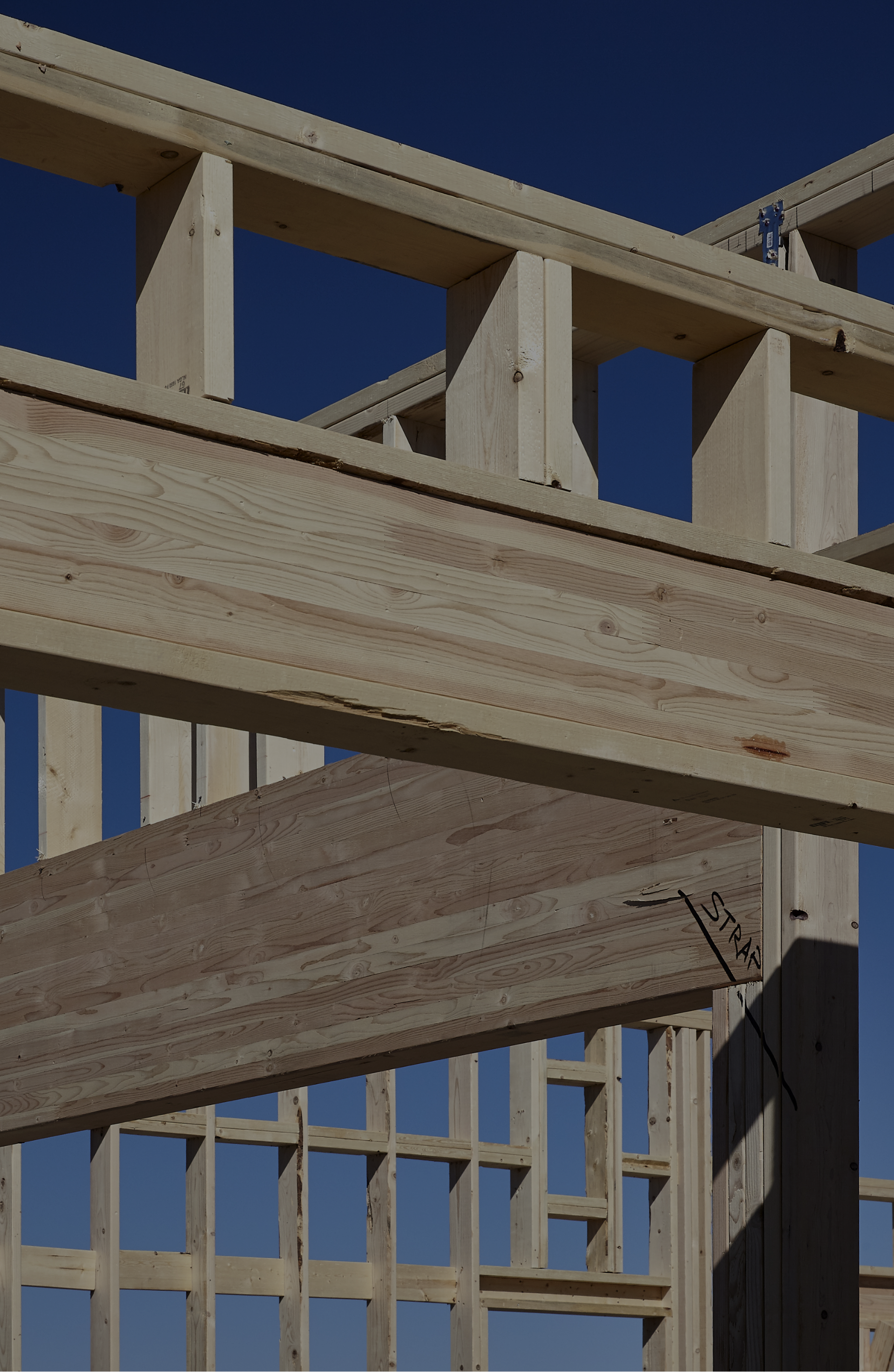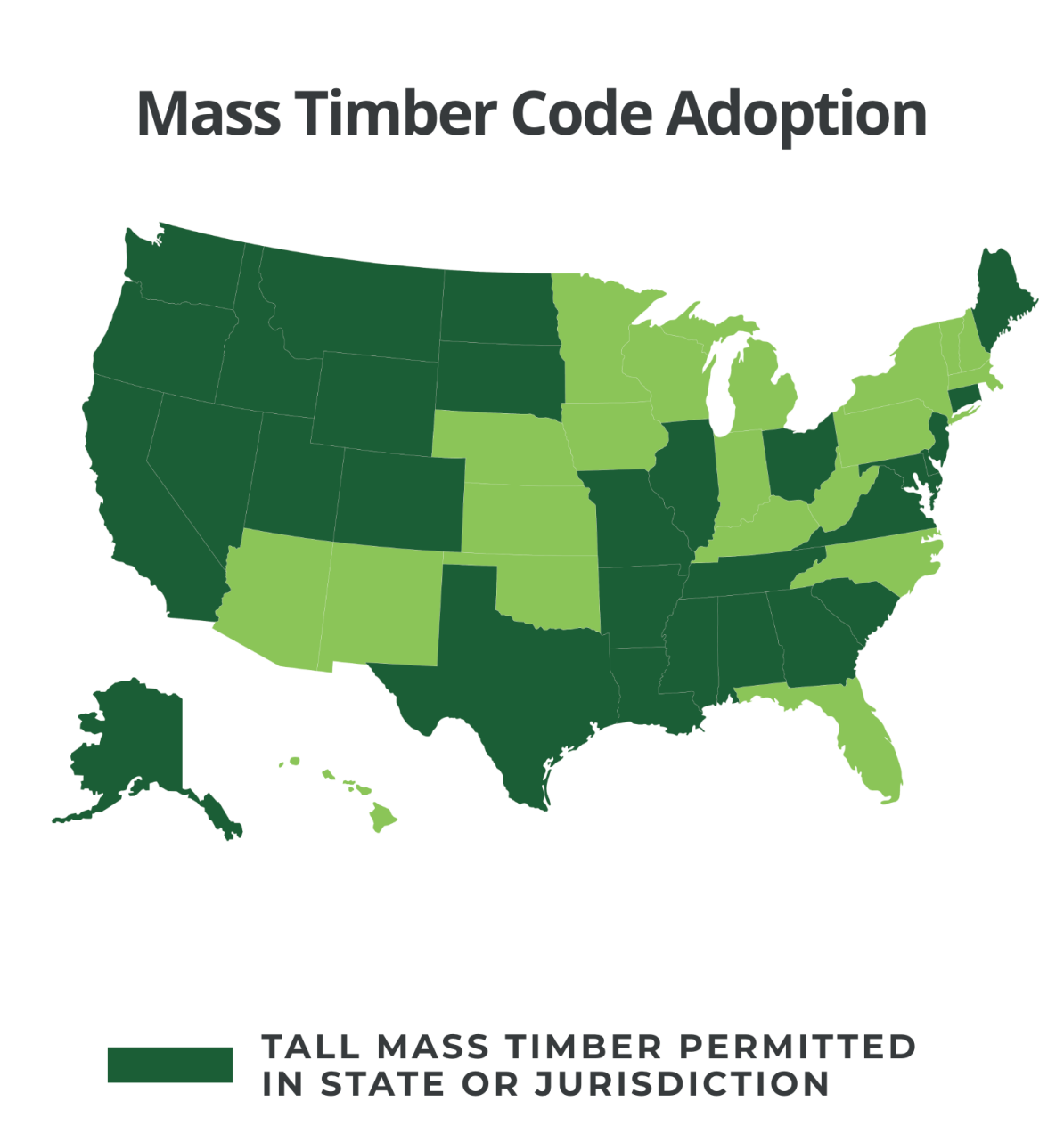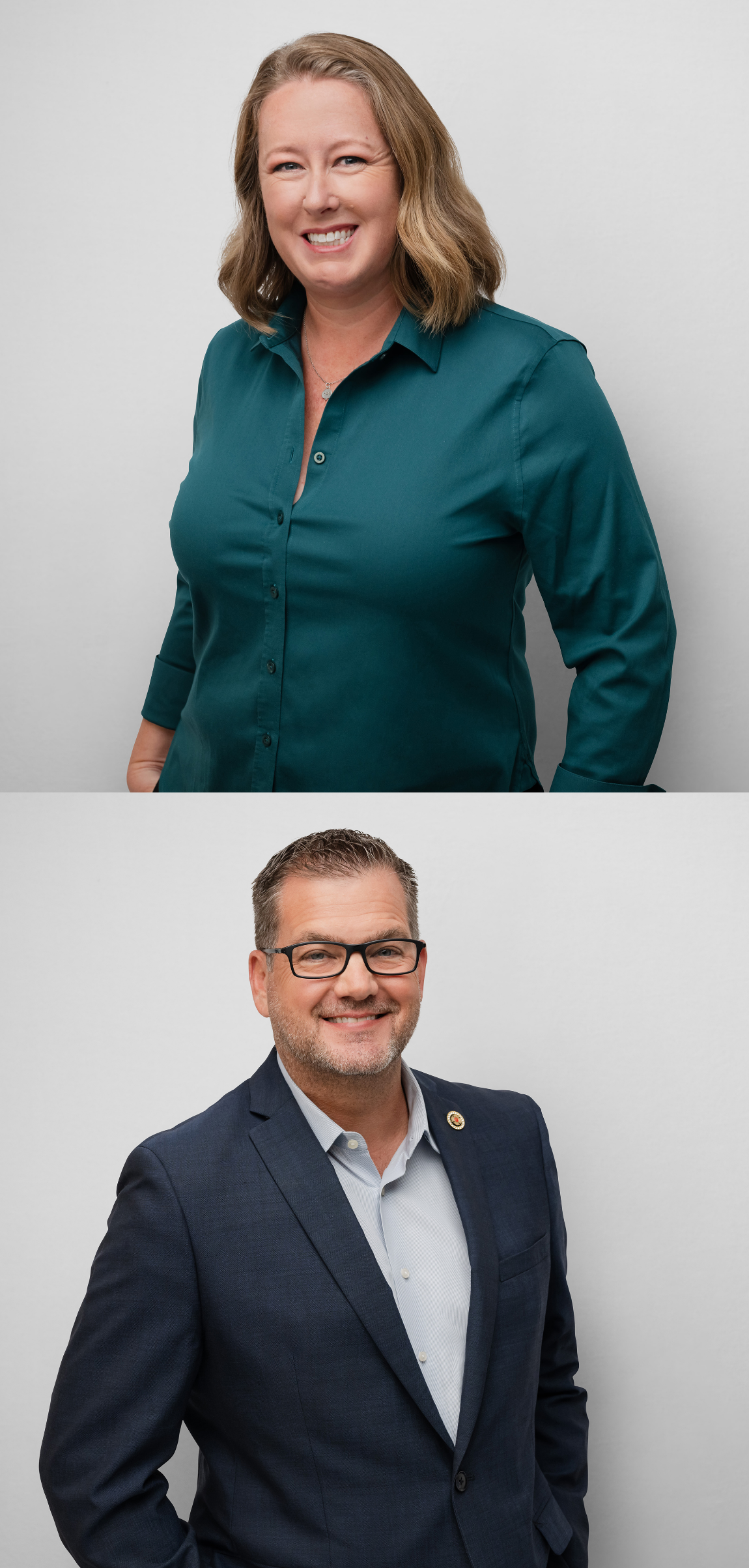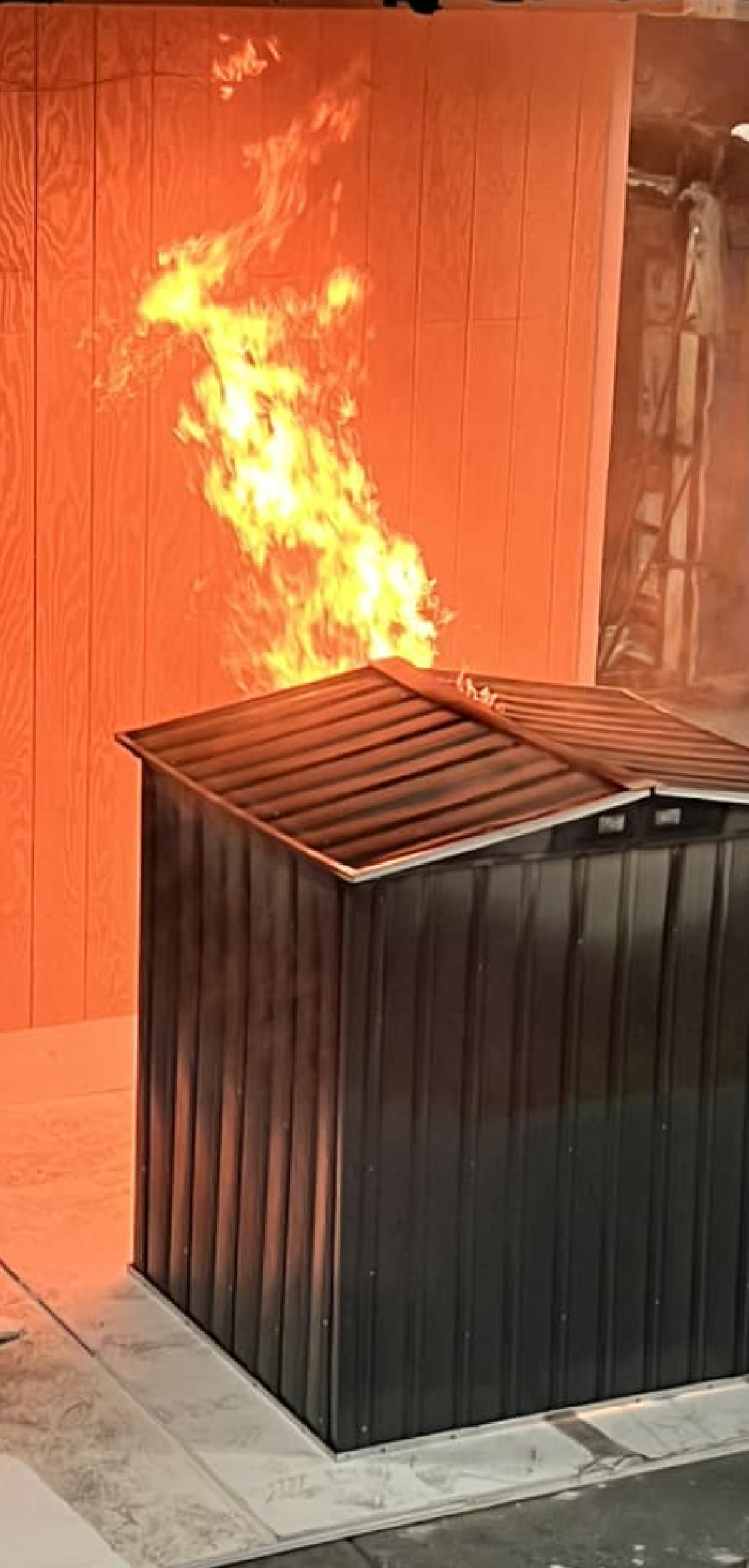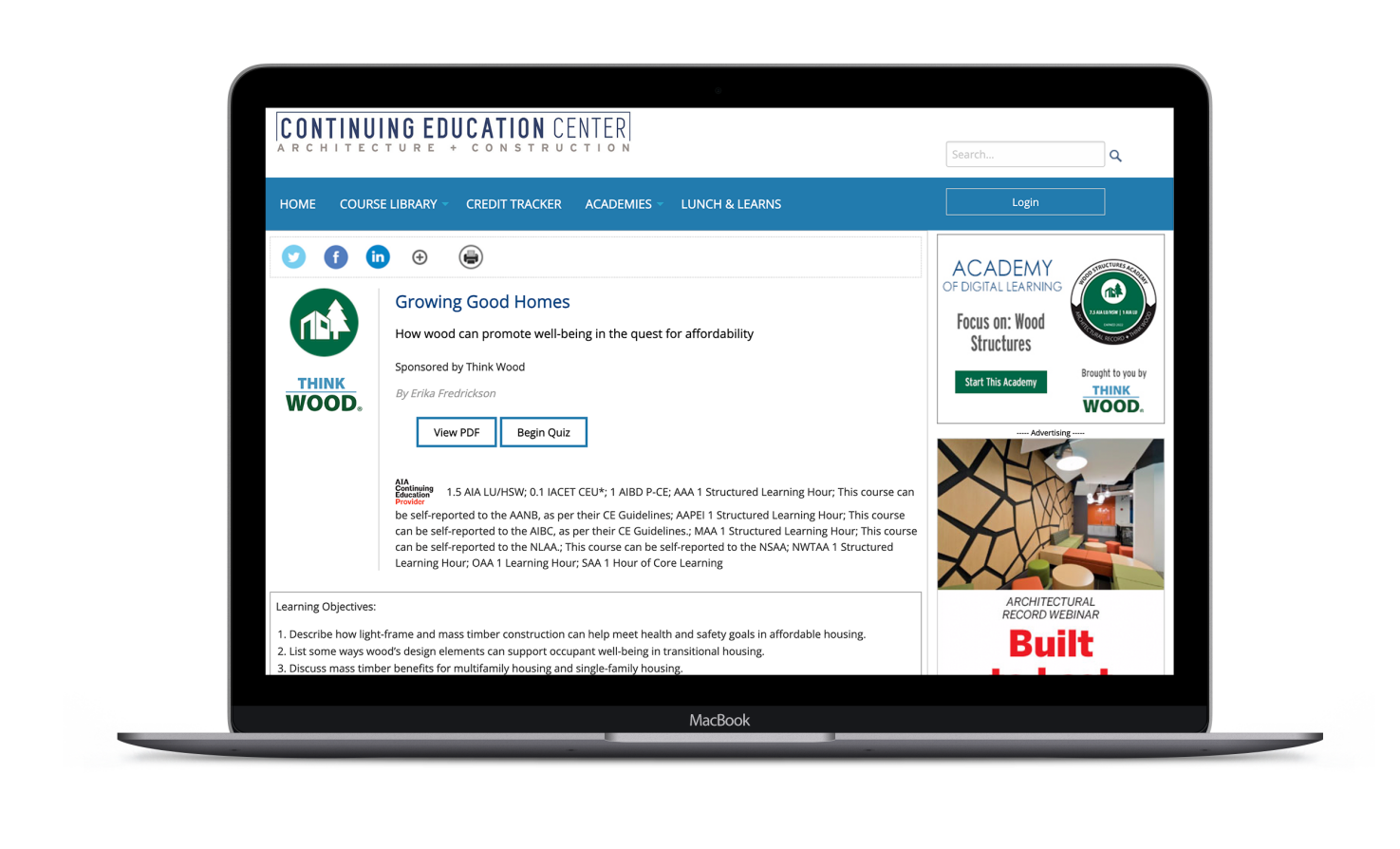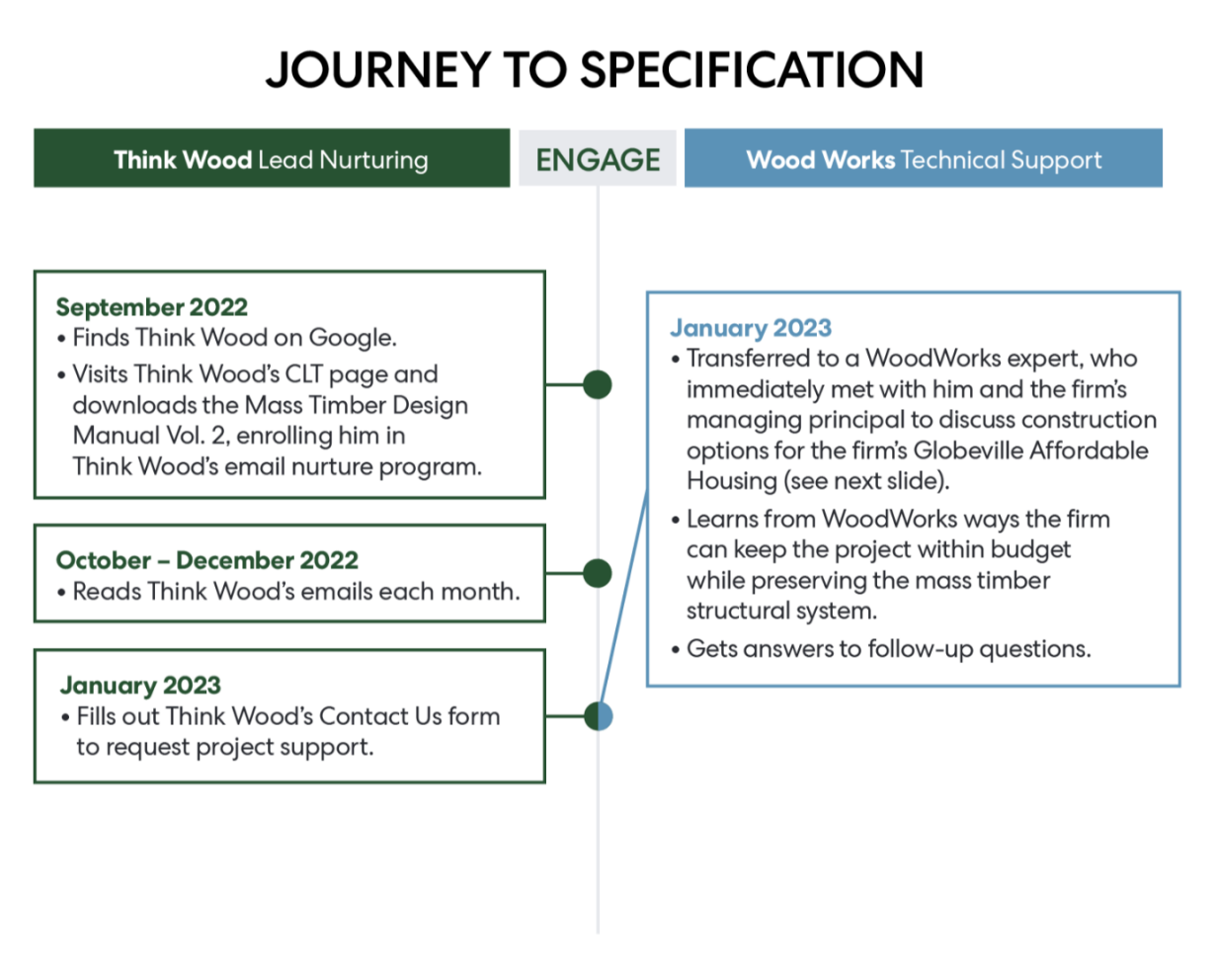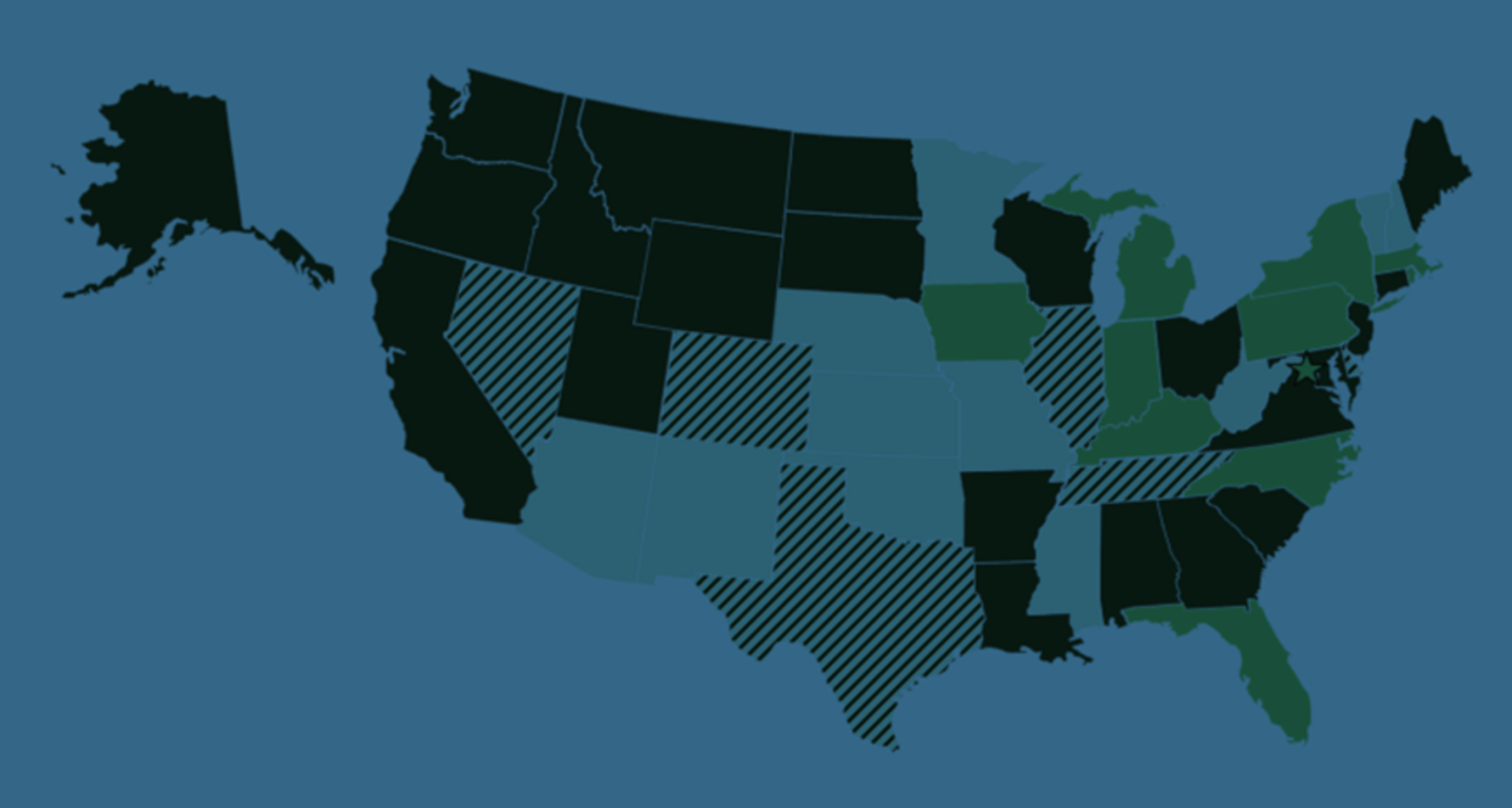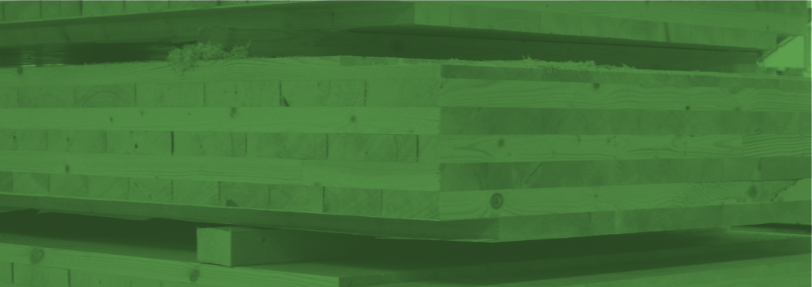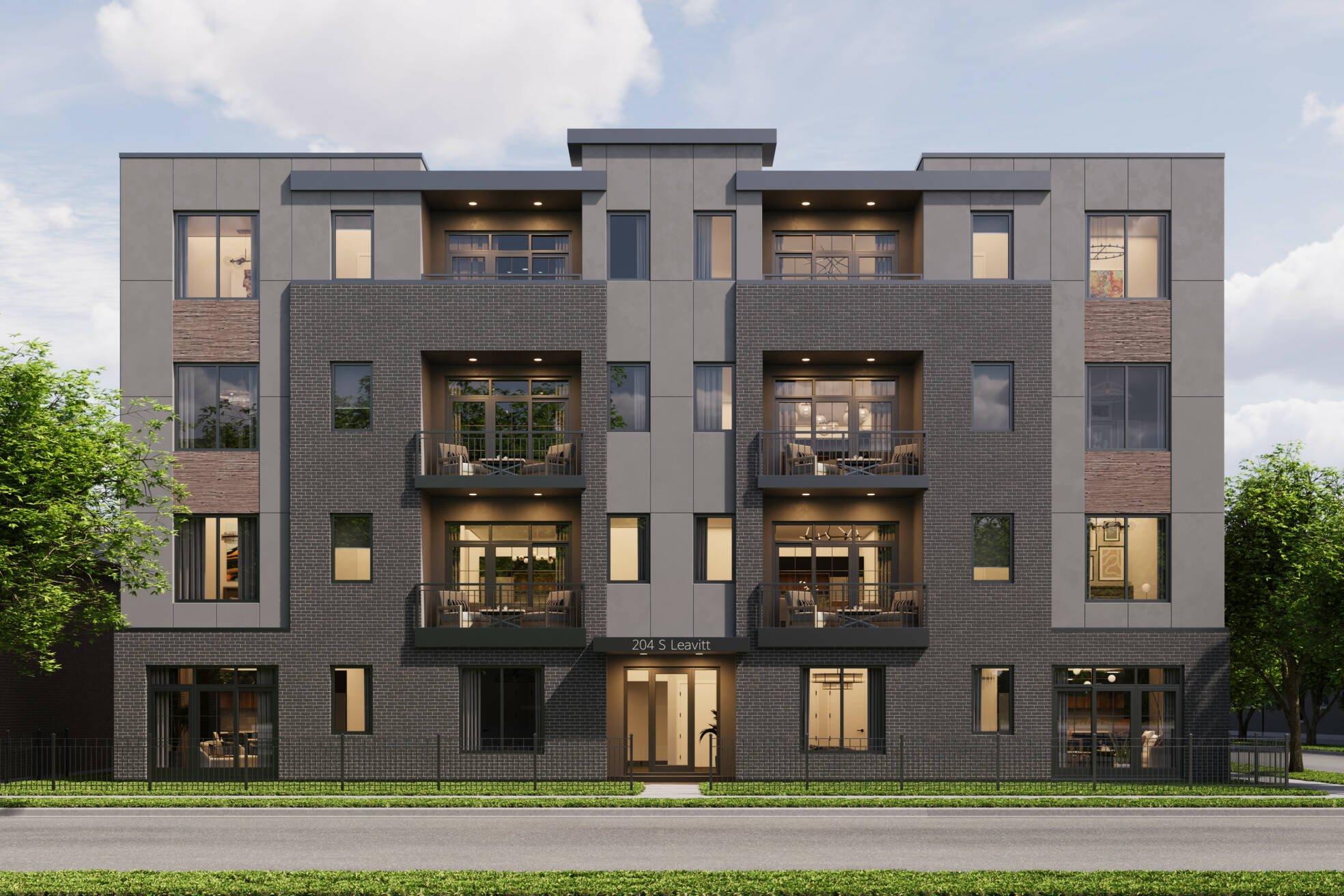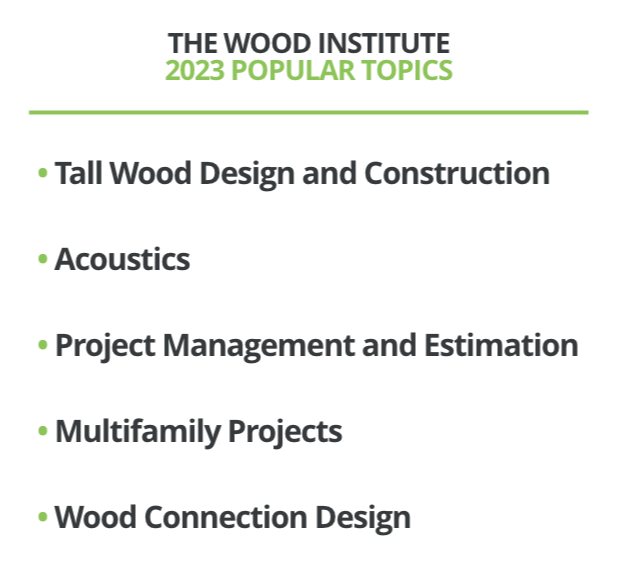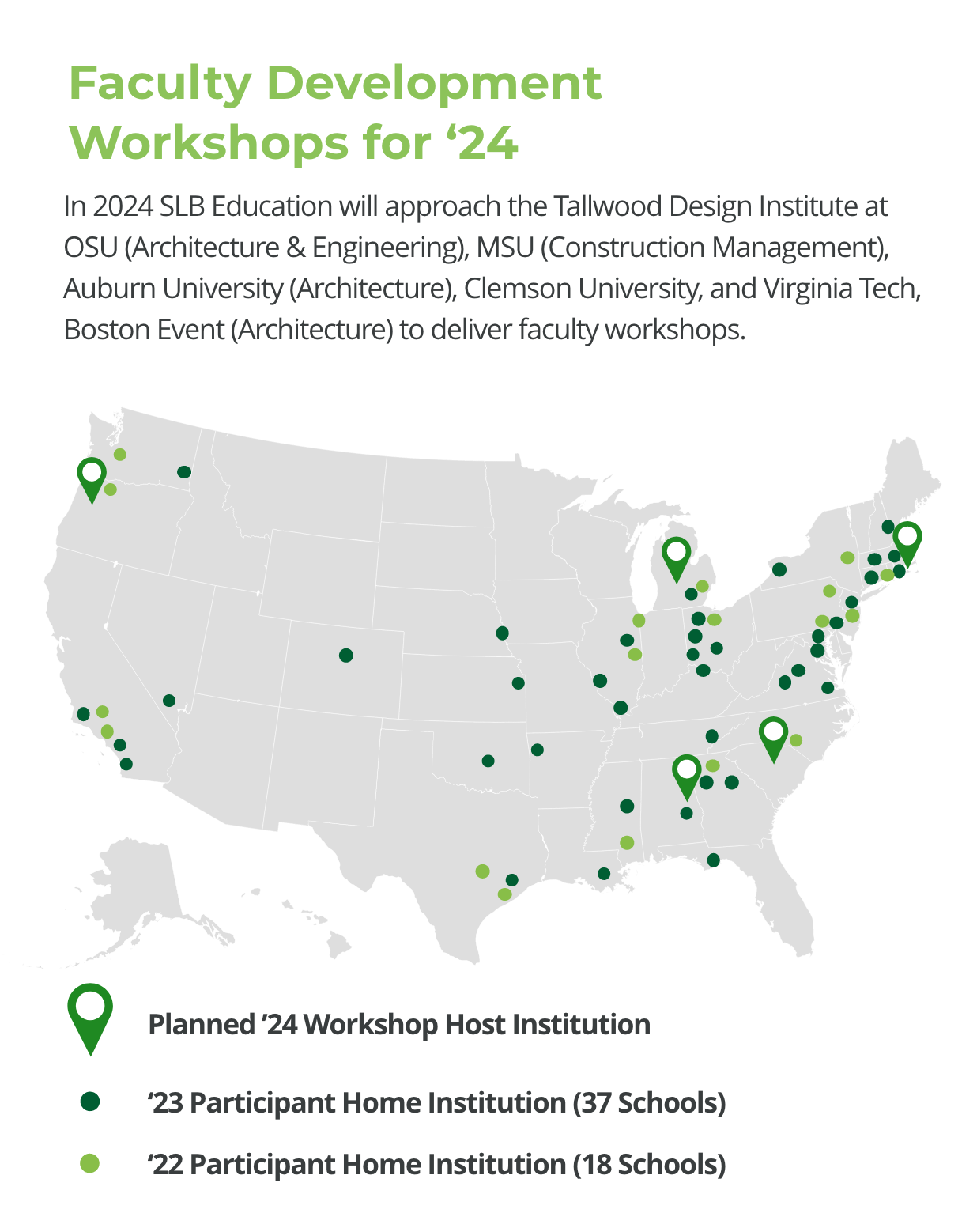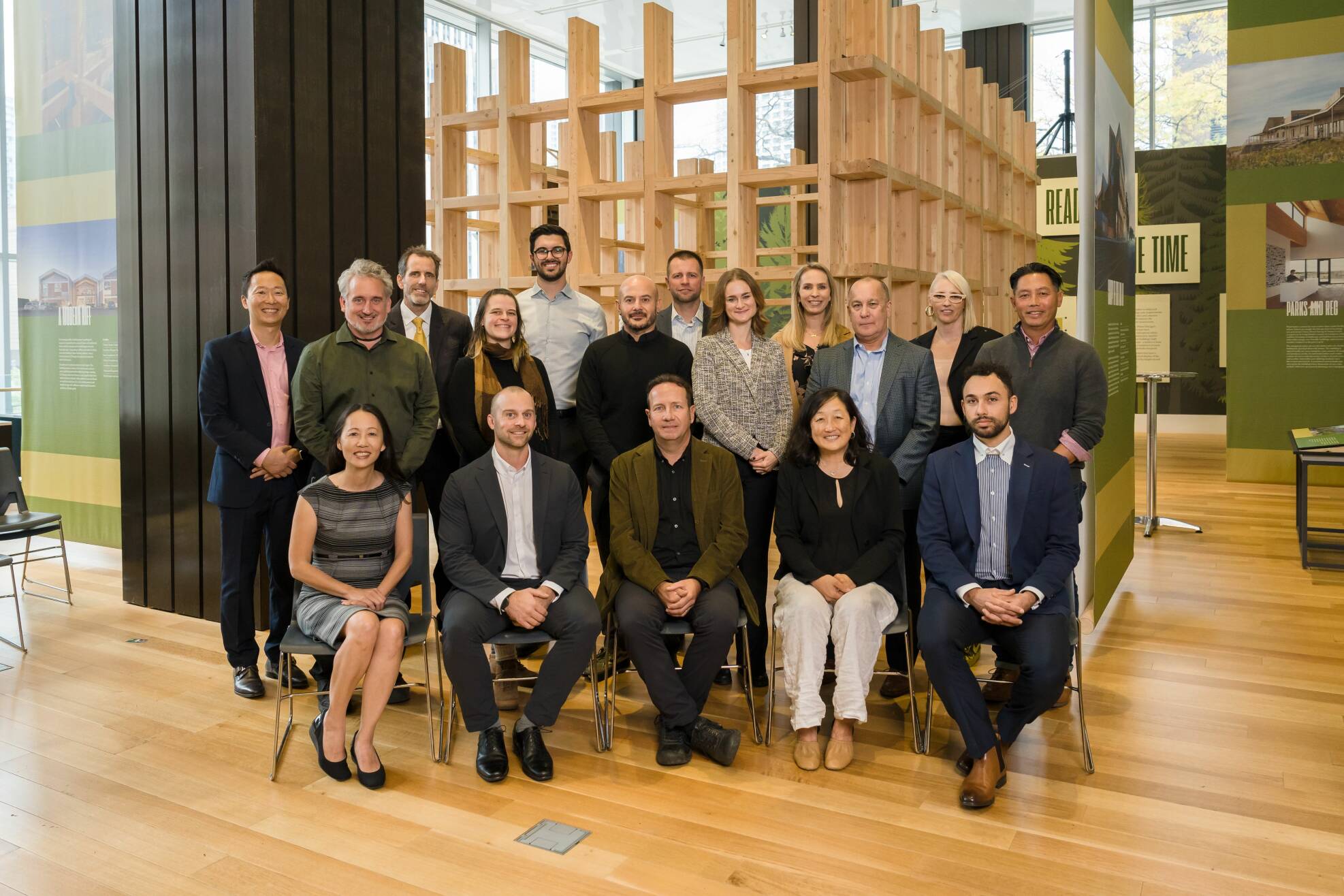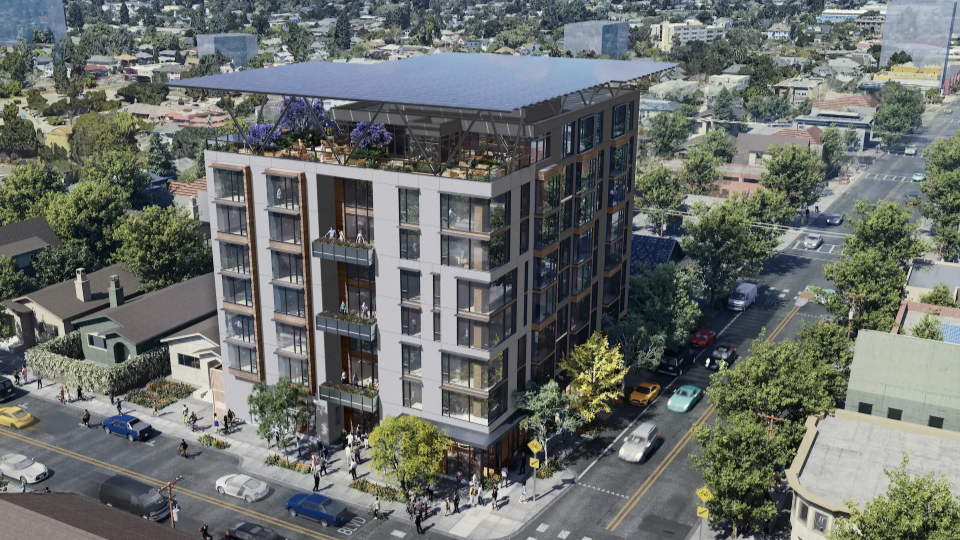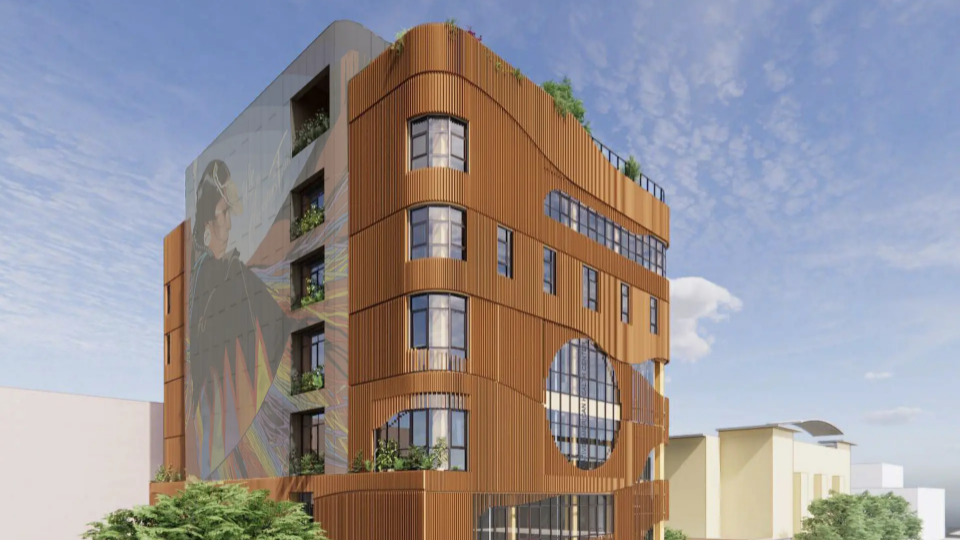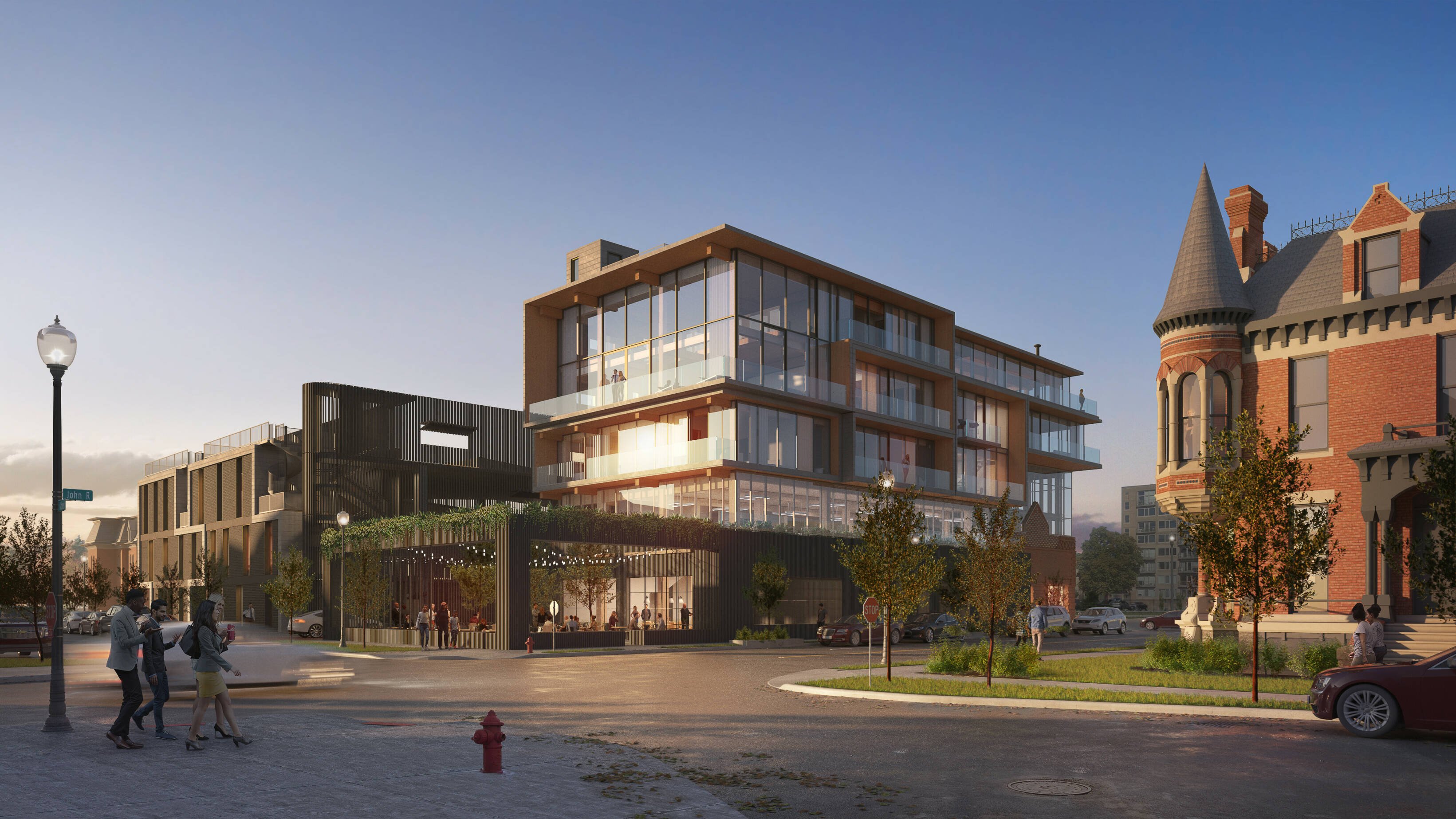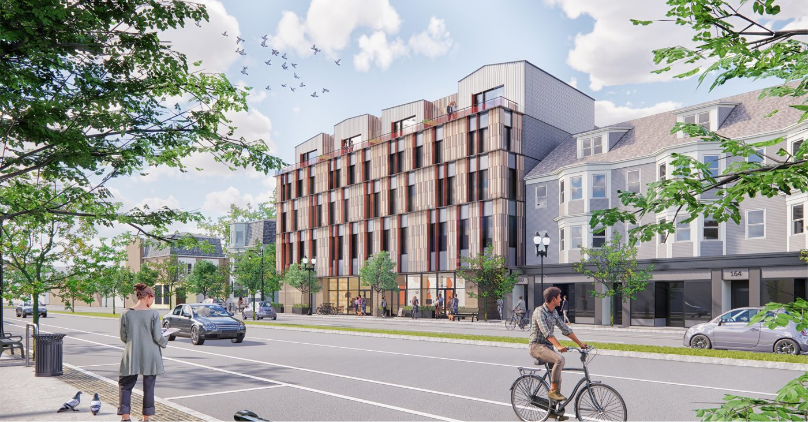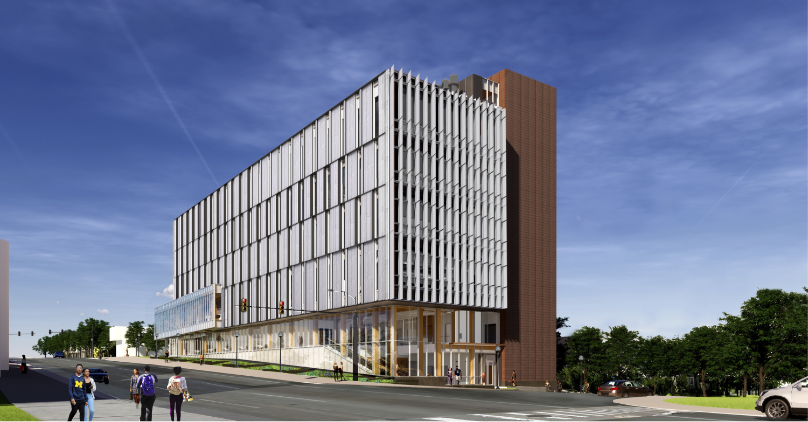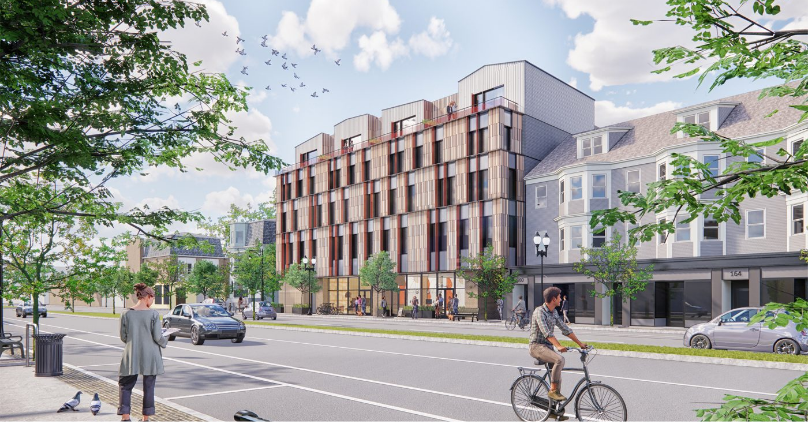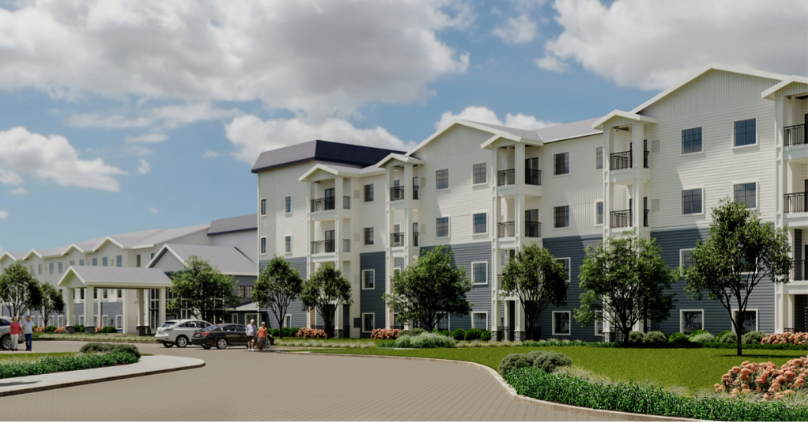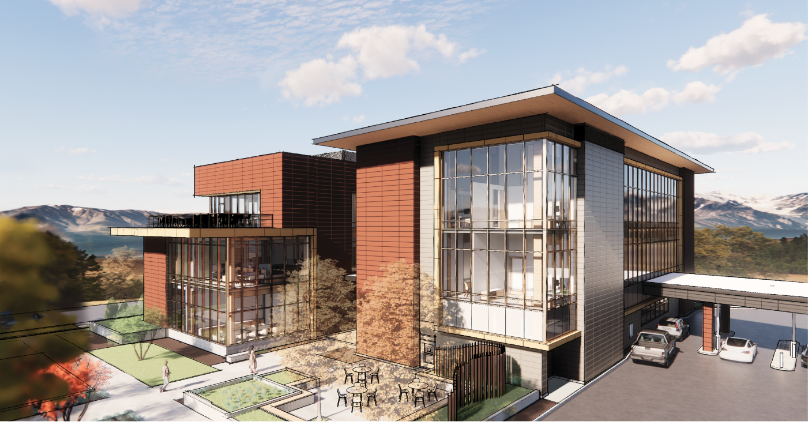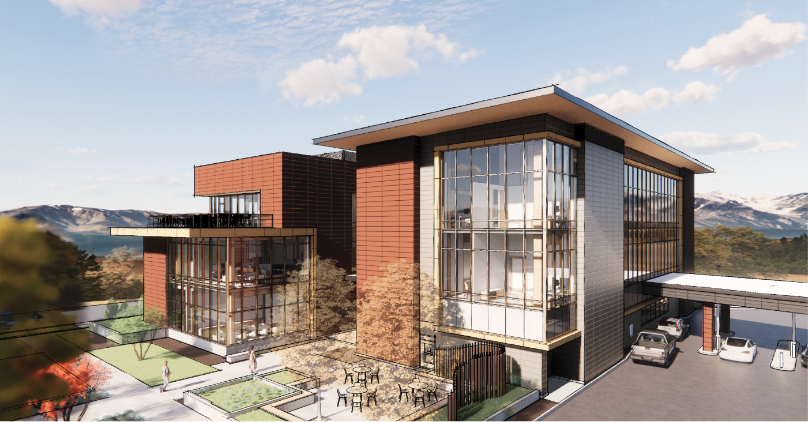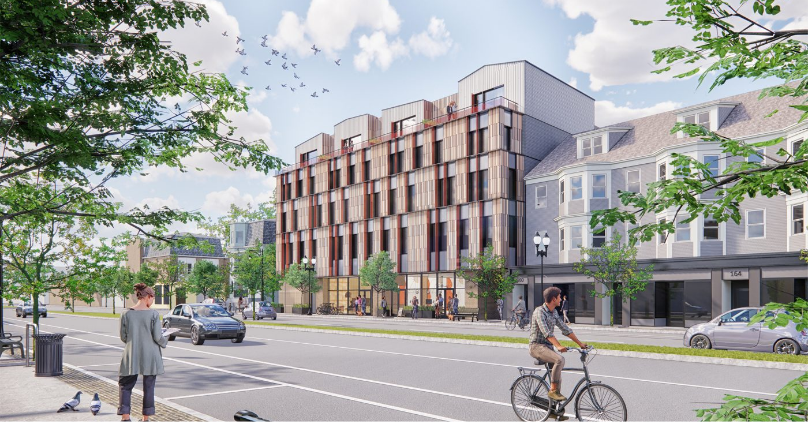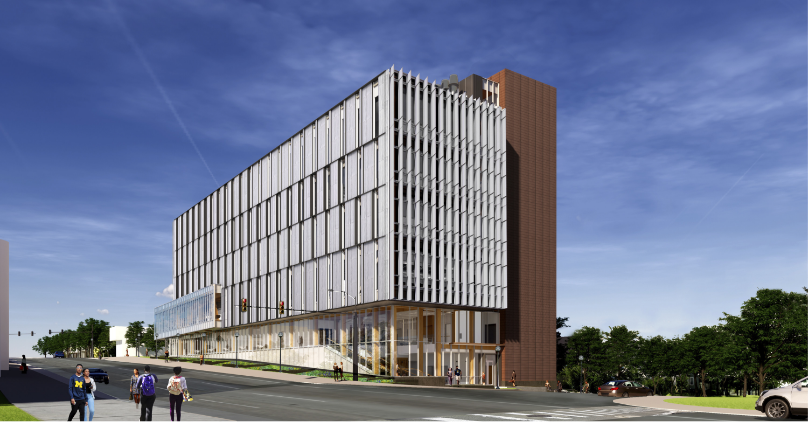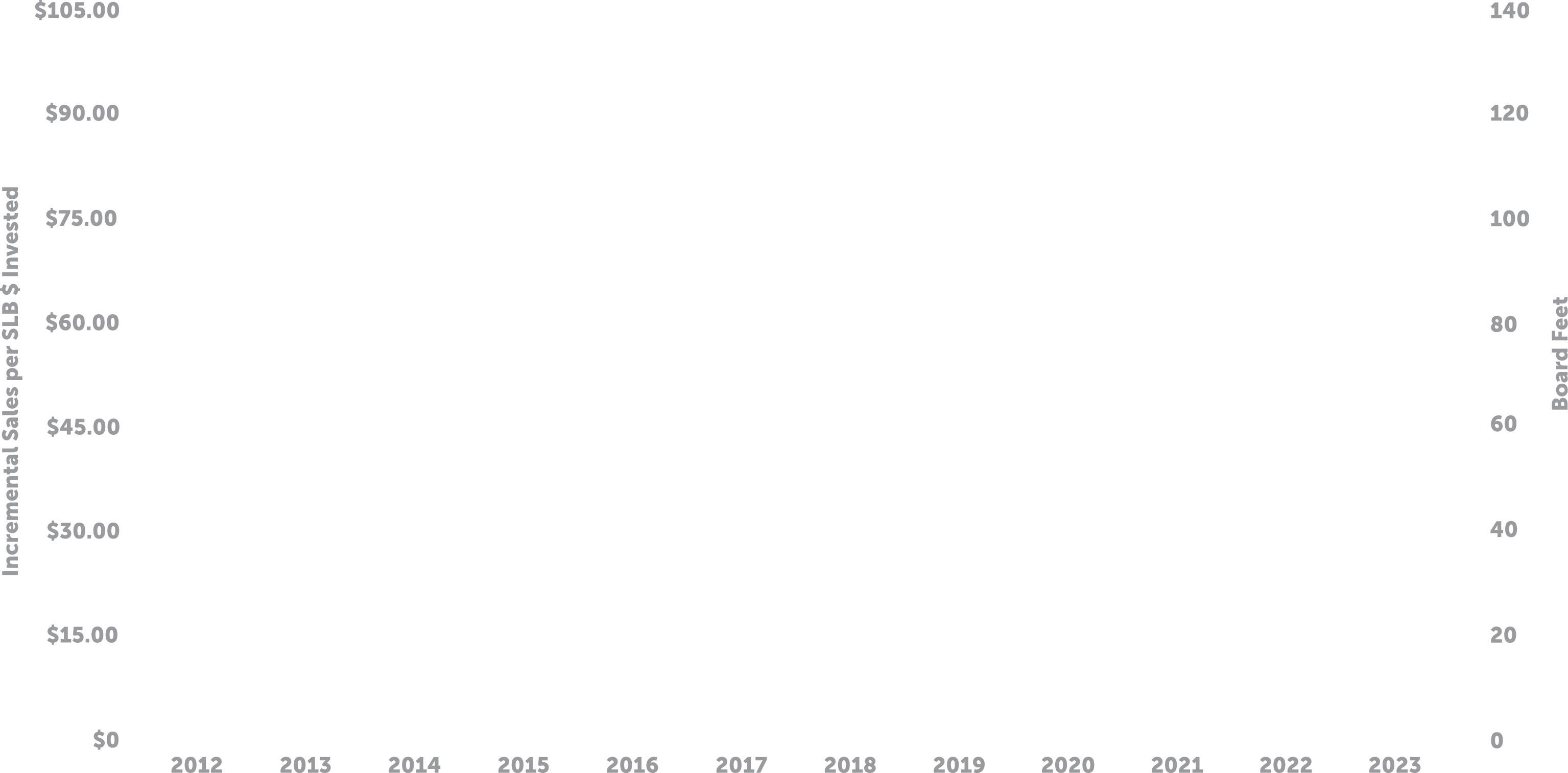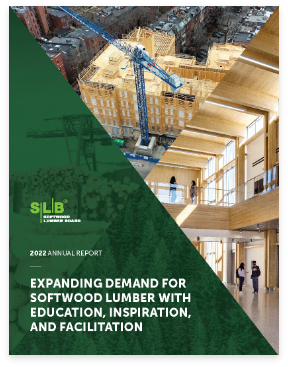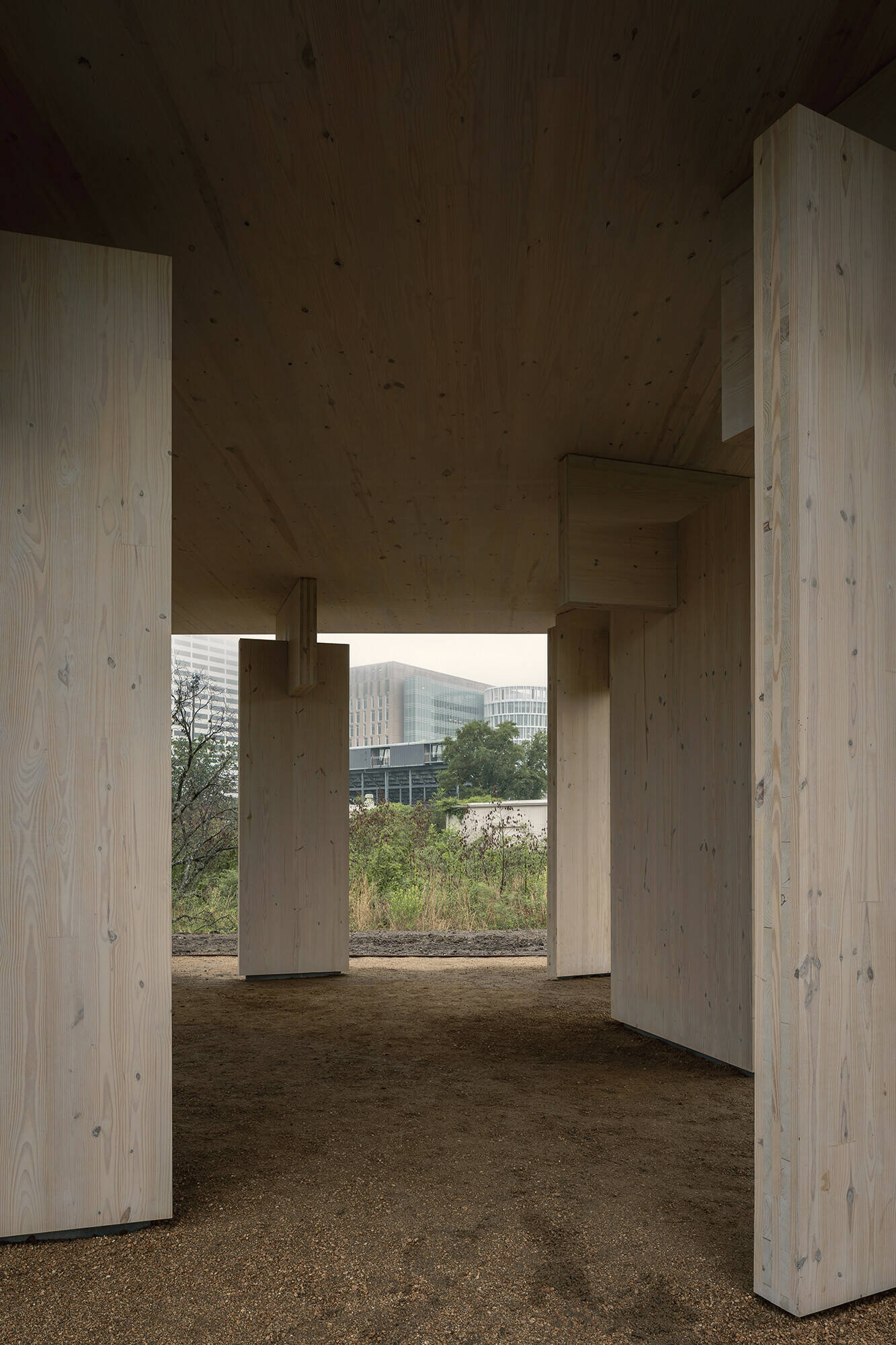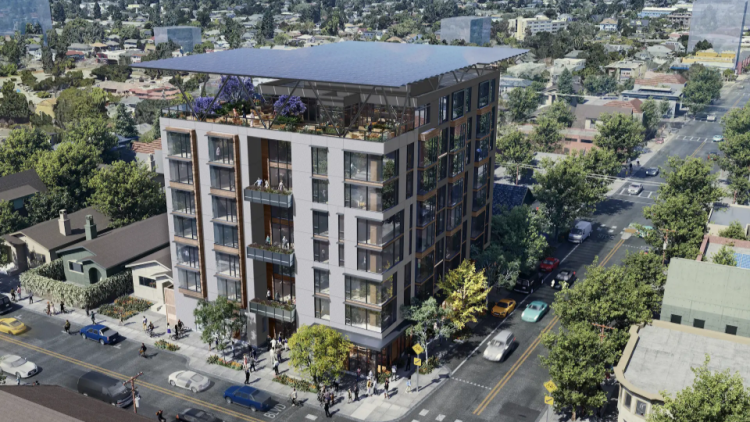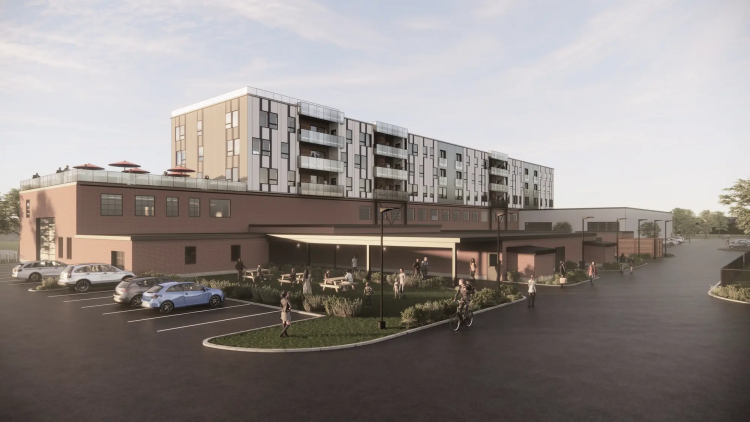
BOARD & TEAM
FINANCIALS
FEATURED PROJECTS
OPPORTUNITIES & TRENDS
2023 MTC
PARTNERSHIPS
PROGRAM HIGHLIGHTS
SLB HIGHLIGHTS
LETTERS

2023 HIGHLIGHTS
BY FACILITATING WOOD USE, PRODUCED A CARBON BENEFIT OF 5 MILLION METRIC TONS OF CO2.
cars of coal.

CODE OFFICIALS FROM SLB–FUNDED PROGRAMS.


resulting FROM SLB
INVESTMENTS SINCE 2012.


GROWTH
ANNUALLY.
THIRD
Over the Lifetime of the SLB from 2012–2023.

in 2023 with AWC support bringing
the total states adopted to 29.


Up from 26% in 2022.
mass timber buildings.
choose wood
Incremental Lumber in 2023.

to 1,490 since 2019.

Co-Nurtured Leads That Led To



Jerome Pelletier
Vice President | J.D. Irving
Program Chair
I'm very proud of what the team has accomplished in terms of market growth, generating 1.9 billion board feet of incremental demand in 2023. I’m particularly excited about the partnership developing between the lumber industry and the steel industry through joint projects with Constructsteel and CTBUH. Instead of fighting with the steel industry, we're building a bridge and working hard at developing areas where we can complement each other and grow market share.
SCROLL TO TOP



SCROLL TO TOP


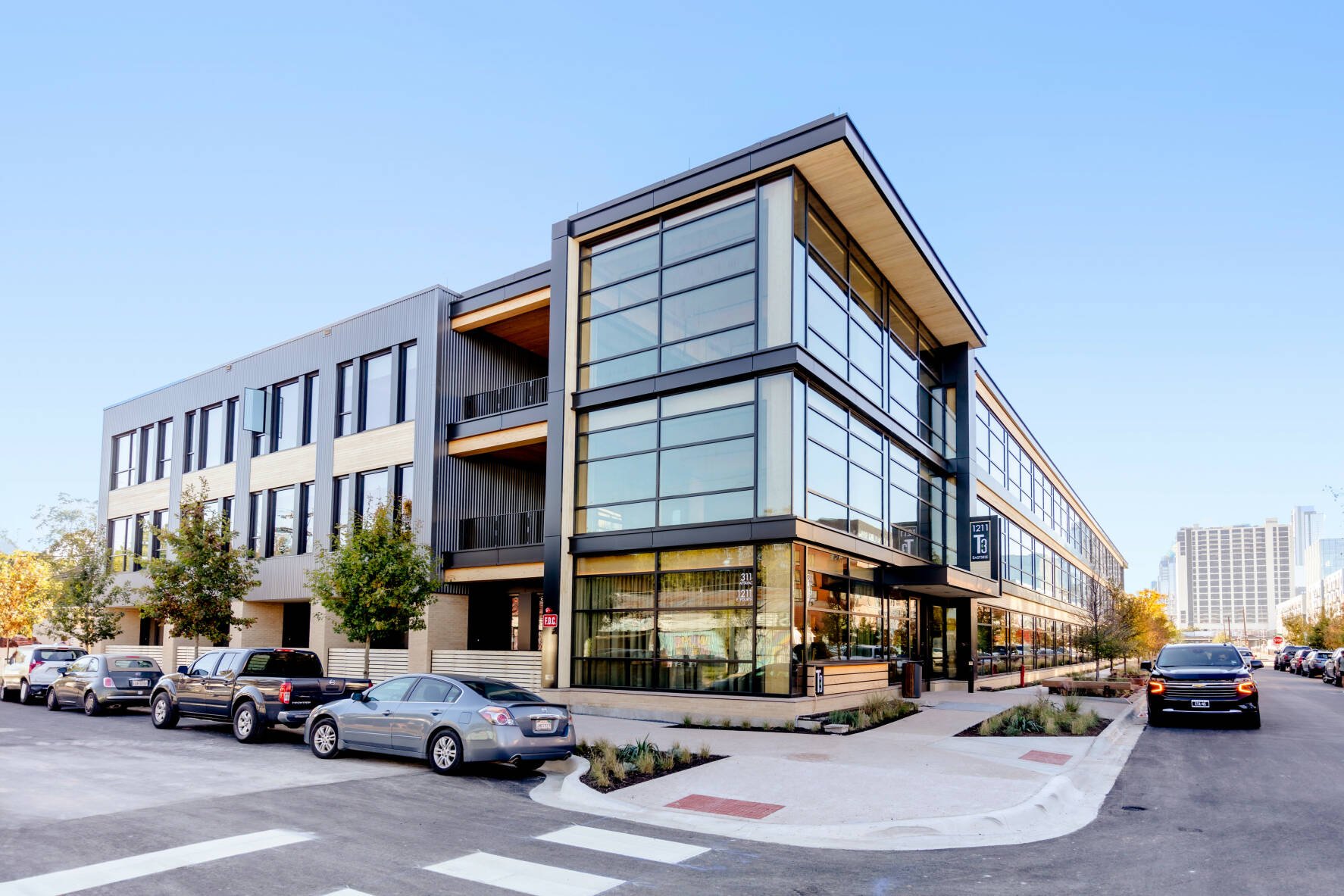
For many developers and design professionals, lumber’s sustainability story, biophilic benefits, and aesthetic appeal are key reasons to build their projects with wood. But economics are often paramount, and lumber-based building systems offer an attractive solution there as well. The SLB and our programs and initiatives are highlighting these benefits to grow market share even in declining markets to ensure that we not only reap the benefits in the short term but also transform how buildings are built in the future.
The SLB is capitalizing on the growing interest in wood construction and lumber solutions specifically by expanding its partnerships. The most recent example of this is our expanded network of university faculty integrating a focus on wood systems into their academic programs. We are fortunate and grateful to have received funding assistance from the U.S. Endowment for Forestry and Communities toward this effort.
In 2023, we continued our successful public-private partnerships. The most successful of these collaborations is with the USDA Forest Service on impactful initiatives such as the Mass Timber Competition, new mass timber accelerators, and the Think Wood communications program and Mobile Tour—each of which is not only supporting innovative projects built with wood, but also creating advocates that will go on to promote the use of wood in groundbreaking buildings to come. We also partnered with British Columbia’s Forestry Innovation Investment to research public perceptions of wood products. This project helped programs like Think Wood shape messaging.
For the first time, the SLB ventured beyond our industry to partner on research and market development initiatives with World Steel Association’s ConstructSteel program, the Council on Tall Buildings and Urban Habitat (CTBUH), and the Charles Pankow Foundation. These efforts focused on capturing market share for steel-wood hybrid systems where wood-only systems are not feasible. Typically, lumber-based systems are used for the floor plates while steel is used for the structural system. Steel and wood together is a true win-win.
As I reflect on another impactful year by the SLB, I’m appreciative of the leadership of our Board, the insights from our industry funders, and the dedication of our SLB team and the programs that make it possible for us to achieve our common goal of a stronger, more resilient softwood lumber industry. Thank you.
Please continue to share your perspective, insights, and guidance as we position the softwood lumber industry for further growth
and prosperity.
Sincerely,
Cees de Jager | President & CEO
Dear Investors,
Through its direct investments and the efforts of our funded programs—the American Wood Council (AWC), Think Wood, and WoodWorks—the SLB delivered another strong year for demand growth and impact for the softwood lumber industry, generating 1.9 billion board feet in incremental demand in 2023. Challenging markets, particularly in the non-residential segment, have required developers to differentiate their projects, and converting them to wood has enabled them to do so, allowing them to benefit from lumber’s economic and environmental value proposition. The impact of the increase in demand for wood and diversification away from other materials resulted in a total carbon benefit—stored and avoided—of 5 million metric tons of CO2 in 2023.

Dear Fellow Investors and Colleagues,
It is my privilege to share with you the Softwood Lumber Board’s 2023 Annual Report. It was a year of tremendous progress for the SLB and its funded programs and initiatives. The SLB continues to prove its impact for industry investors by protecting existing markets and generating more softwood lumber demand by expanding new and emerging markets.
Lumber and lumber-based building systems are a key to making non-residential and multifamily buildings more affordable, valuable, and sustainable, and there’s a growing consensus among the building design industry, developers, and their clients about the positive economic and environmental attributes of wood products. Based on the discussions I have had, our industry is recognizing the impact and value of the SLB’s investments over the last 12 years.
This positive momentum serves as a tailwind, amplifying the influence of the SLB’s work. When project teams begin their work already knowing that wood can differentiate their buildings from competitive offerings, our efforts to remove obstacles to using wood have more immediate impact. The results of this work over time are remarkable: The SLB’s investments have generated 13.7 billion board feet of incremental lumber demand since inception.
The SLB is a careful steward of our industry’s funding through the checkoff program. I’m proud to share that this year, the SLB’s return on investment was $42.79 for each dollar spent. Since inception, the SLB has generated $45.26 of revenue for every $1 invested by the lumber industry.
The success of the SLB is made possible by the strong industry leadership provided by its Board. As such, I would like to thank outgoing Directors Eric Cremers of PotlatchDeltic, Hugues Simon of Resolute Forest Products, and Caroline Dauzat of Rex Lumber for their service and contributions to the Board. Caroline deserves special recognition: She led the Board during the challenging times of the Covid era, restructured and formalized the SLB staff compensation process, and laid the groundwork for more and diverse voices to be added to the SLB’s governance structure. We are fortunate that she will continue to serve on the Executive Committee.
Thank you once again for the support you’ve provided, not only to me, but to the staff of the SLB’s programs, the employees in your workforce, and the people in your community by investing in the industry’s future. I look forward to working with you in the year ahead to continue building on this year’s accomplishments.
Sincerely,
Brian Luoma | SLB Board Chair







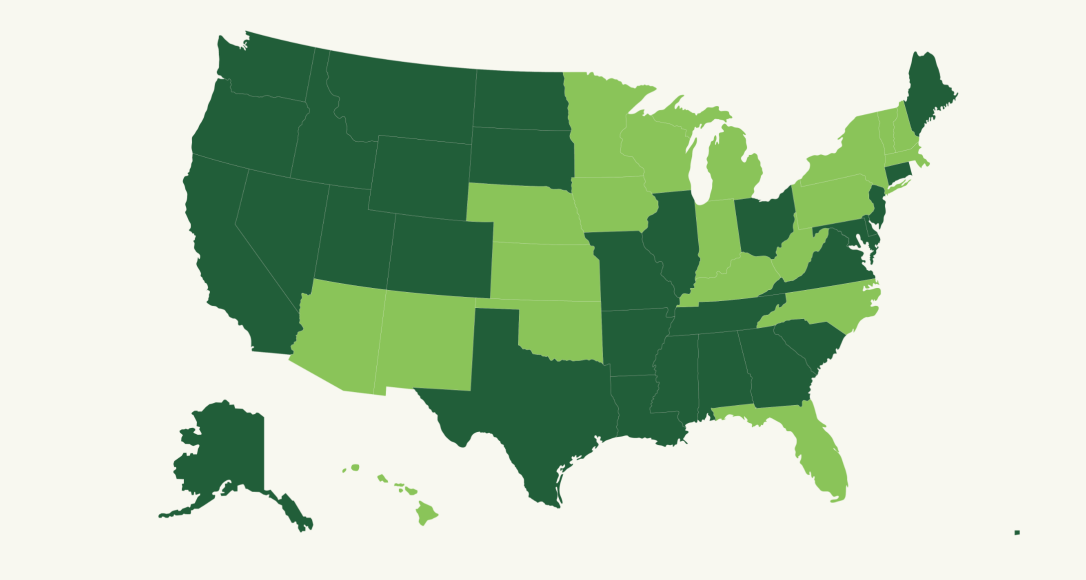

Hours Logged
Across All Events




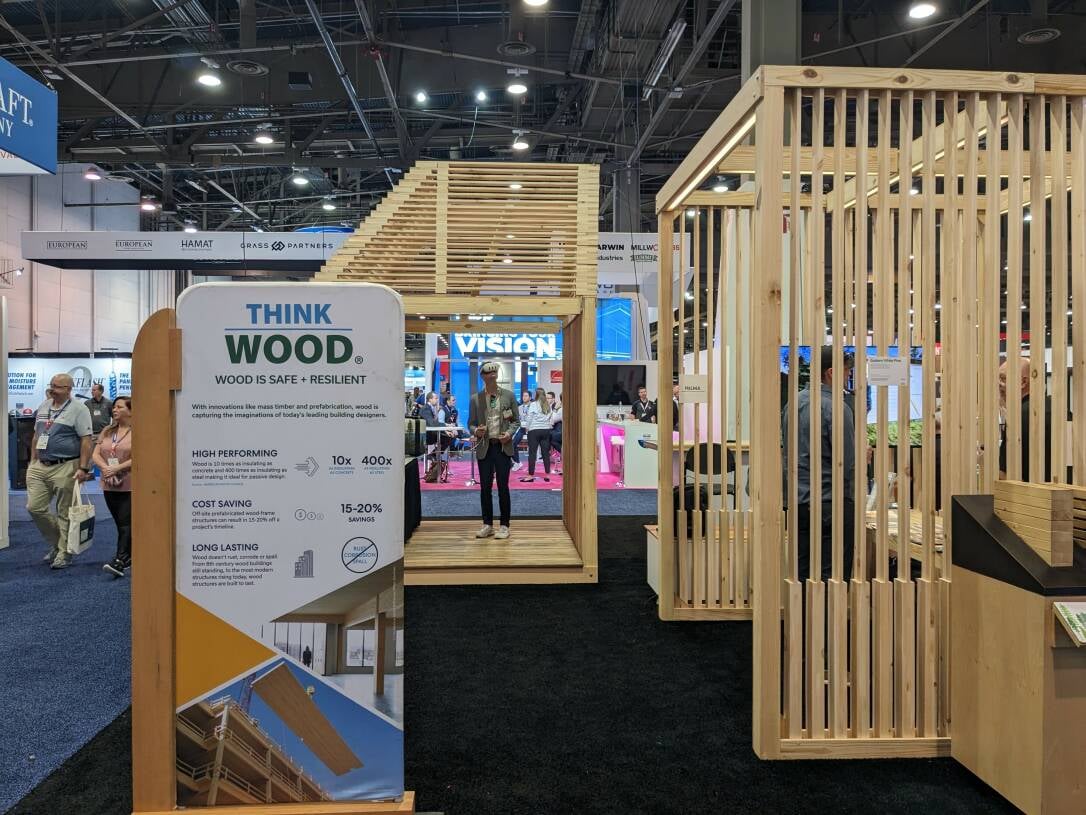

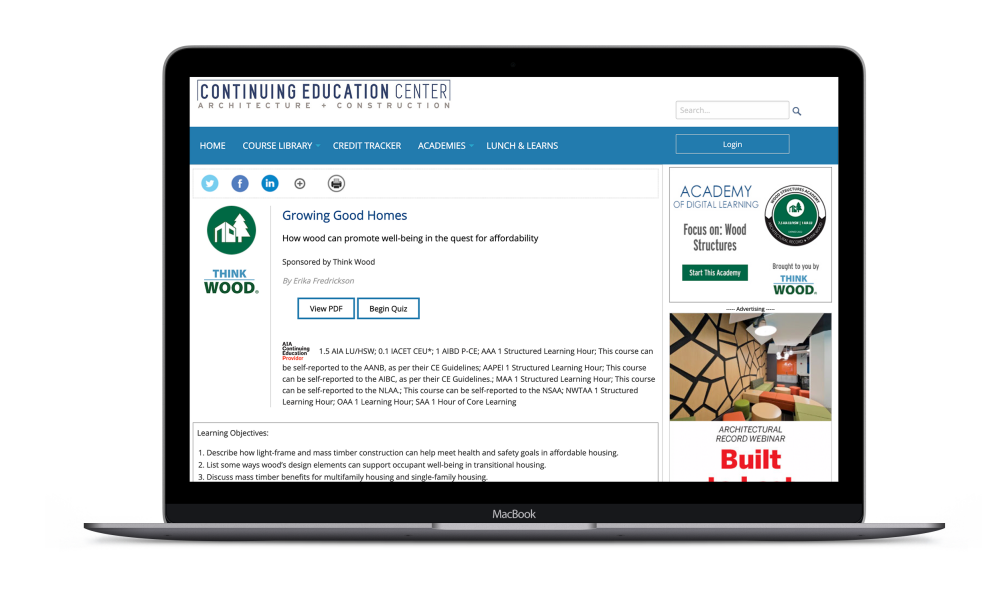

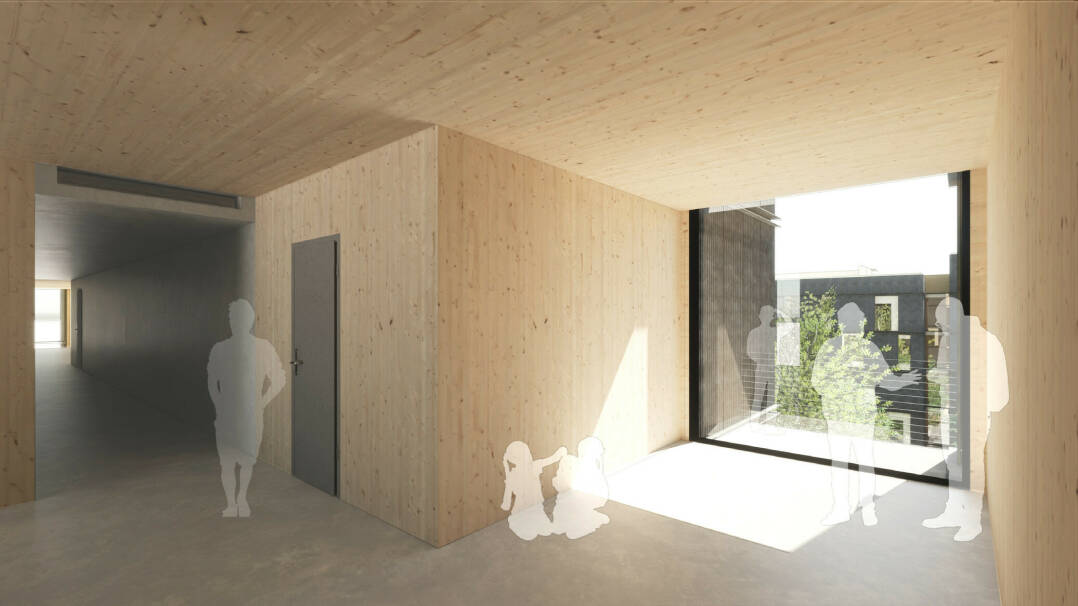



Brad Thorlakson
President & CEO | Tolko Industries Ltd.
First Vice Chair
It’s vital for our industry to build interest among architects, engineers, and developers when designing and building with wood construction systems. Not only has Think Wood become a highly valued educational resource—delivering one of its strongest years ever for innovative wood construction content—but it also serves as a platform that’s generating new professional contacts across the construction industry.
Leads (SQLs)
73.6 MM BF
OF LUMBER
Projects




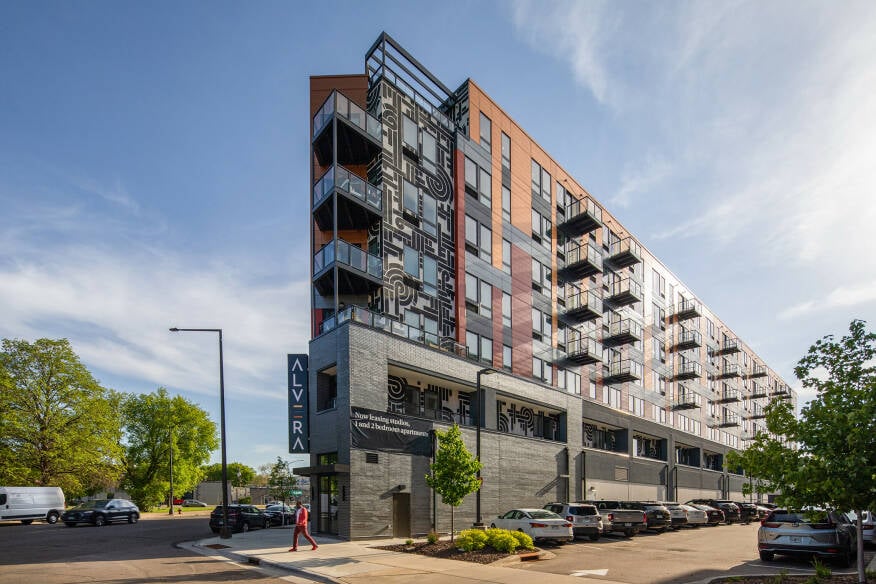
with Education
and Support



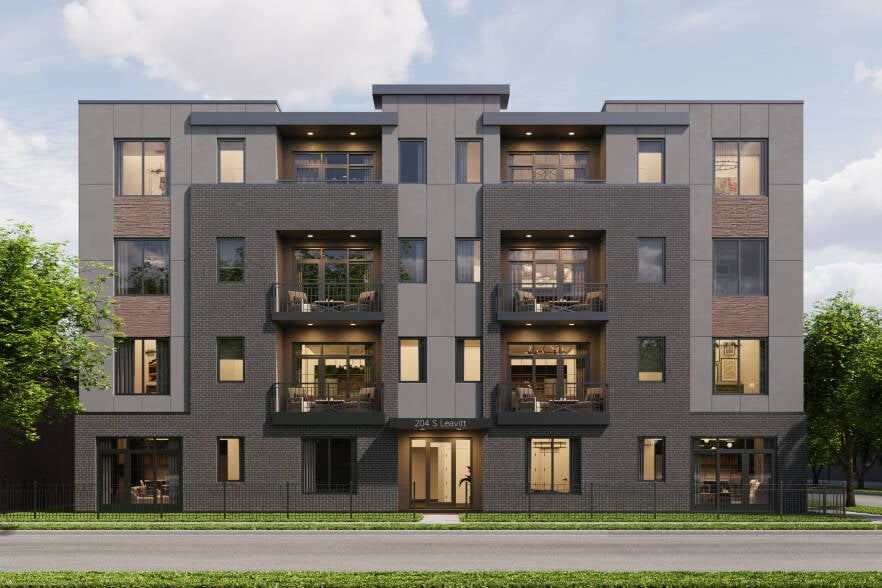
Show Growth in Project Support Despite Tight
Credit Conditions

Structural Panels


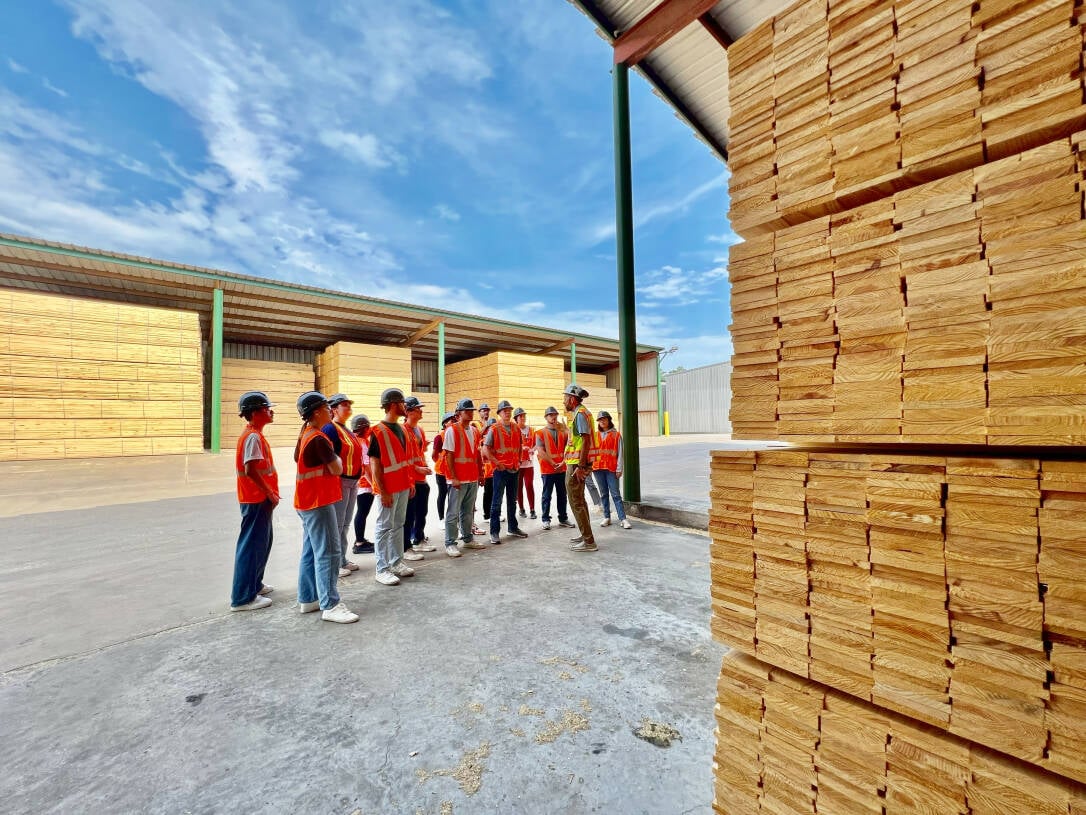





WOOD INSTITUTE
Completed
WOOD INSTITUTE



J.D. Hankins
Owner | Hankins Inc.
Industry Relations and Governance Chair
The SLB is such an important part of our industry—I wish we could have created it 20 years earlier. The SLB has led to more cohesiveness in our industry than I ever thought could exist. I’ve been impressed with the diversity of perspectives coming from different regions and companies of different sizes, bringing up ideas that can change our industry for the better. It’s critical that we continue to get participation from investors to help guide the direction of the organization, so we can keep making headway on finding more opportunities to use lumber.
REACHING THOUGHT LEADERS

SCROLL TO TOP


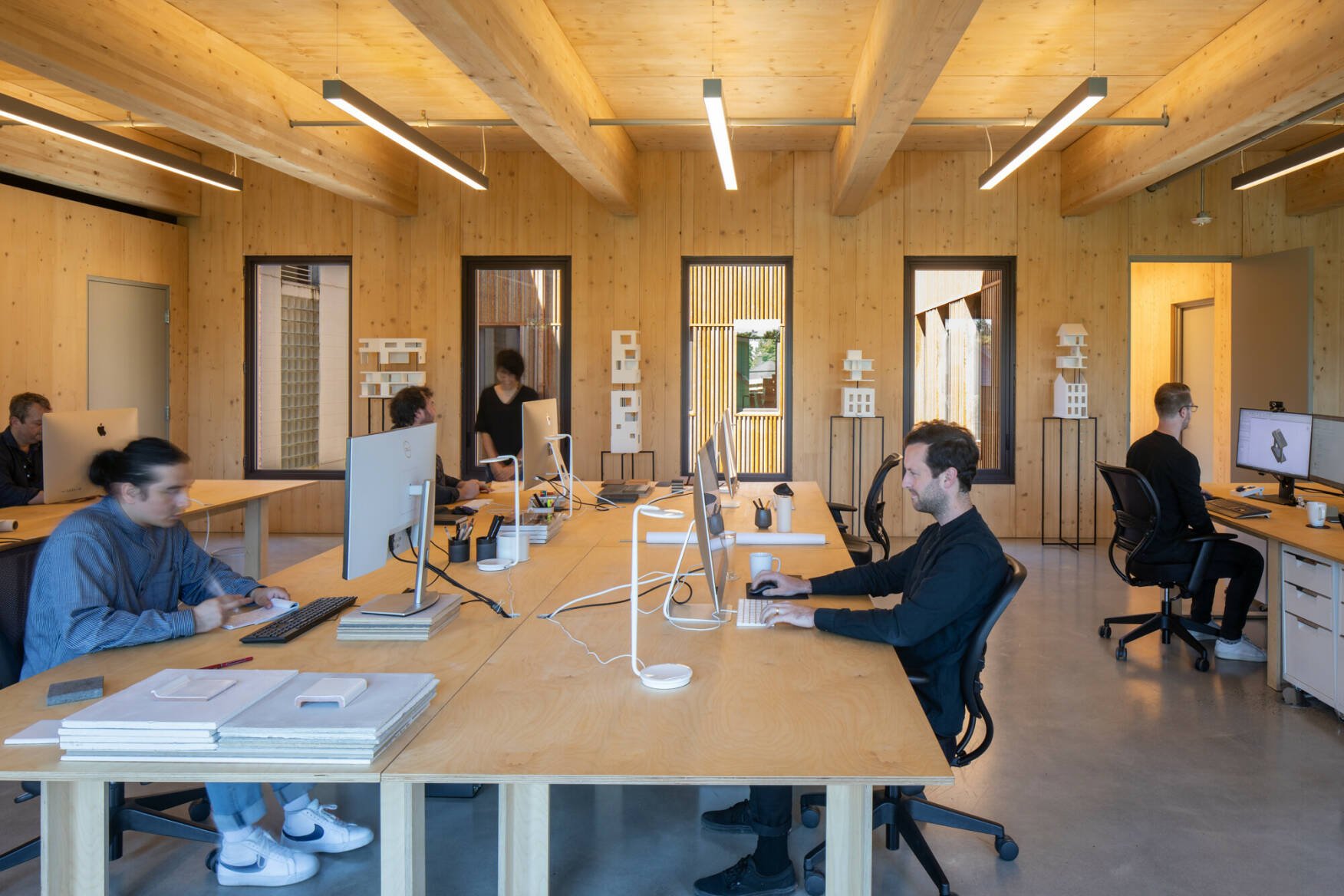

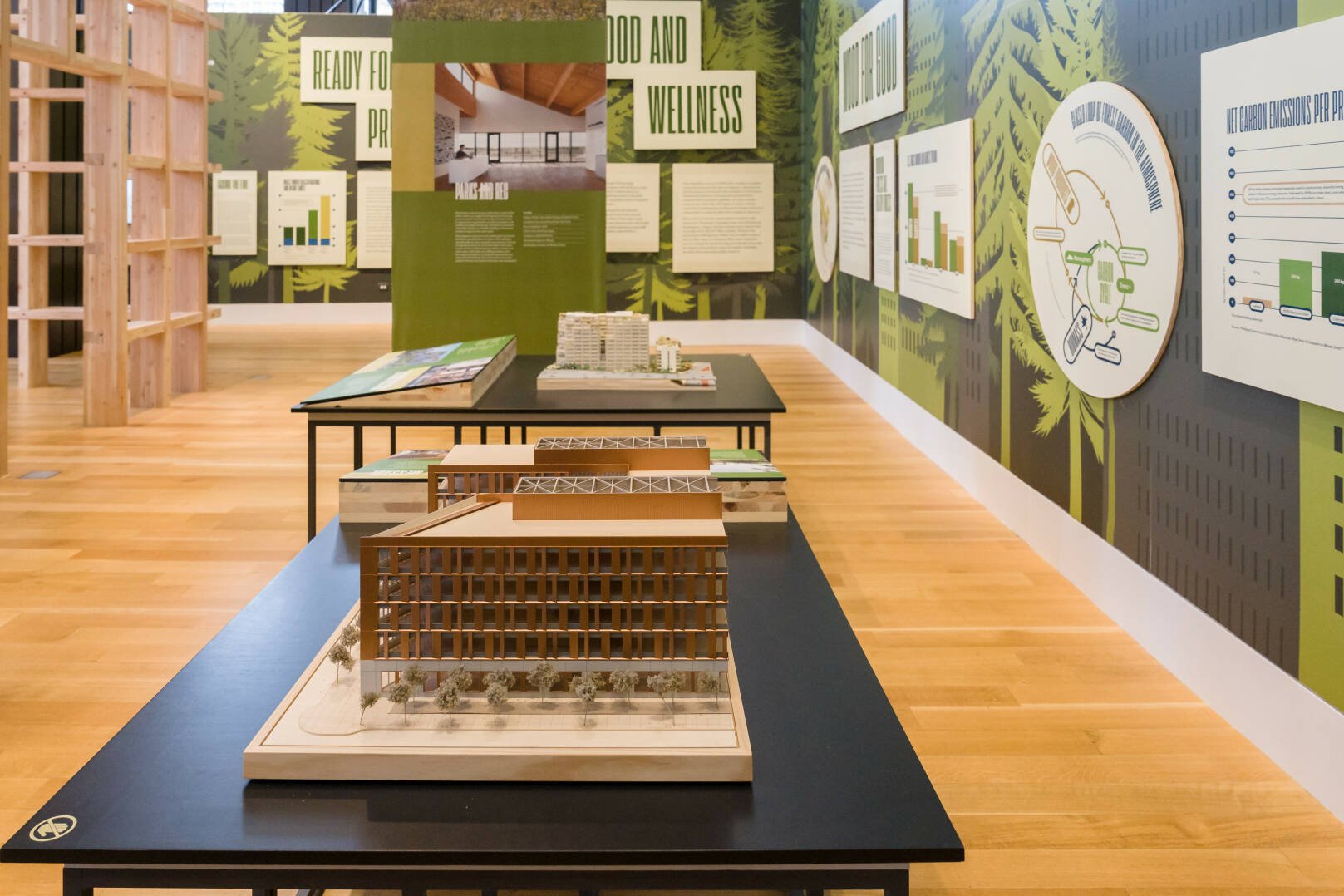
Working with strategic partners leverages the SLB’s investments in efforts to grow demand for softwood lumber, helping both to grow awareness with wider audiences and to seed innovation.
In 2023, the Chicago Architecture Center launched the SLB-sponsored exhibit REFRAMED: The Future of Cities in Wood, which showcases the sustainable, aesthetic, and biophilic benefits of building more cities with mass timber and tall wood construction. Reaching an influential audience of design industry thought leaders, and supplemented by a series of wood design–focused lectures, the exhibit established wood as a progressive, innovative material of choice that can help address some of the biggest challenges of our times. The success of REFRAMED, which concluded in January 2024, prompted the Skyscraper Museum in New York to launch its own exhibition—called TALL TIMBER: The Future of Cities in Wood—using elements from the Chicago program. TALL TIMBER is expected to run from February to April 2024.
Another SLB-funded interactive exhibit about wood products and building design in the Northeast, designed for the Fairbanks Museum in St. Johnsbury, Vermont, is now being repurposed at Maine’s Portland Museum of Art, raising wood products’ profile with the design community and general public.
The SLB is also helping fund a growing number of market-expanding innovations in partnership with the USDA Forest Service. New mass timber accelerator programs in Atlanta and New York City use matching funds from the Forest Service’s Wood Innovations Grants and other programs, leveraging the impact of the SLB’s $50,000 investment for each against the $500,000 overall project. The accelerators will fund and support selected projects with technical assistance, removing barriers and streamlining code compliance to help build momentum in the cities.
In addition, several projects funded in previous years by Wood Innovations Grants and supported by matching funds from the SLB are making significant progress—opening up new market opportunities for the softwood lumber industry. These include:
Design and engineering analysis for two mass timber high-rise residential developments from The Neutral Project
An all-wood mixed-use building in Portland, Oregon, demonstrating the potential for exposed timber components
Blast testing research in reinforced CLT from engineering consultants Karagozian & Case
A CLT design tool developed by structural engineering firm Equilibrium
The SLB continued its work in 2023 with the CTBUH and Constructsteel, building on an audit that found market potential for wood-steel hybrid towers, with only 8% of the 84 tall mass timber towers built to date using mass timber and steel. After launching the Steel-Timber Hybrid Buildings Conference in 2022, CTBUH completed a draft in 2023 of a technical guide on the potential of steel-timber hybrid buildings featuring detailed case studies and data. The resource is set to publish in 2024.

SCROLL TO TOP


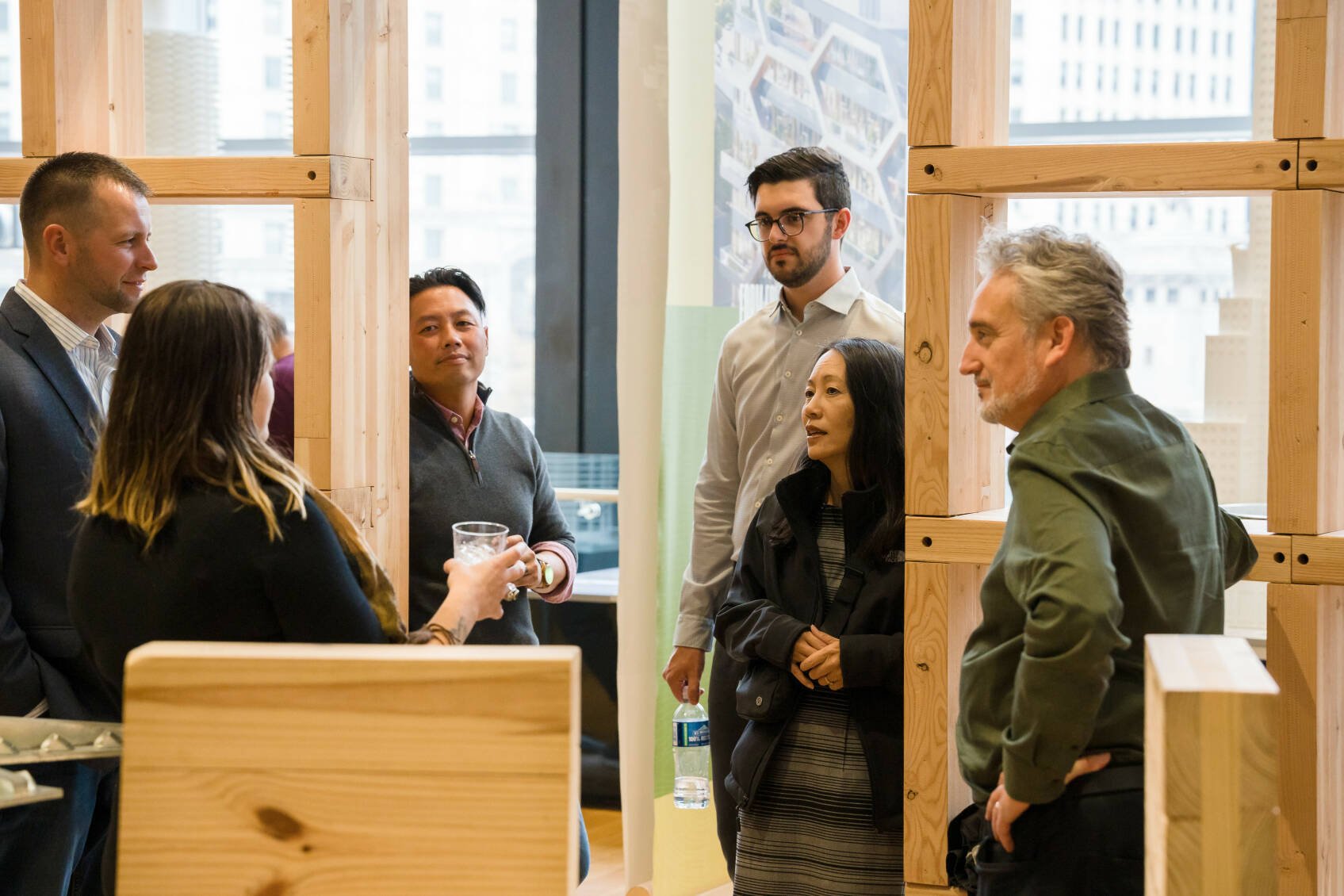

1 of 5



CODA Detroit
A 95,000-square-foot, five-story mixed-use mass timber residential project incorporating elements of historic preservation and new methods to address acoustical challenges. Its team comprises OOMBRA Architects, Brush Park Properties, IN Development Partners, JDH Engineering, Britt Peters and Associates, and AM Higley.


John Crockett
Deputy Chief of State and Private Forestry USDA Forest Service
One way to improve the health and resilience of forests is by sustainably harvesting trees to manufacture wood products like mass timber. As wildfires become more prevalent across the United States, a stronger supply chain for lumber and mass timber improves forest health and supports the construction of low carbon buildings—both effective ways to mitigate the impacts of climate change.
This year’s Mass Timber Competition: Building to Net-Zero Carbon creates new opportunities for broader adoption of mass timber.
The second consecutive competition, funded jointly by the Softwood Lumber Board and USDA Forest Service, showcases uses of mass timber, expands the building types that can be built from wood, and strengthens the supply chain for lumber from working forests. The competition supports multiple segments of the design and construction industry and assists project teams to solve challenges and overcome hurdles that often confront newer products and systems.
The award recipients were announced in Chicago in October at the REFRAMED exhibit at the Chicago Architecture Center. Over the two iterations, the softwood lumber industry invested $2 million for the prize funding, leveraging an additional $2 million from the USDA Forest Service. To advance the market, award recipients are sharing lessons learned during project phases—including cost analyses, life cycle assessments, and other research—with the broader design and construction community to promote faster adoption of mass timber as a structural material in similar projects across the country.
Winning projects from both the 2022 and 2023 competitions are making progress and already beginning to generate insights that can be used to solve long-term challenges for mass timber adoption. Evergreen Charter School, an 85,000-square-foot, five-story hybrid CLT education facility with biophilic design elements, broke ground in Q2 and is planned for completion in 2024. “When you look at the rendering for our classroom, and you see wood in the space, it’s a completely different environment. It looks so much more positive than a typical classroom,” architect Martin Hopp said in a WoodWorks case study. “Ultimately, if we can design better-quality environments for the same price, that equals better performance, lower rates of absenteeism, etc. That’s the key metric we’re designing for.”
The project team for 2022 winner Return to Form, a 12-story multifamily and retail project in Denver with affordable housing, completed a Whole Building Life Cycle Assessment, demonstrating the full carbon footprint benefits of mass timber construction with a real-world example. It is projected to be the tallest mass timber structure in Denver when completed, targeted in 2025.


SCROLL TO TOP


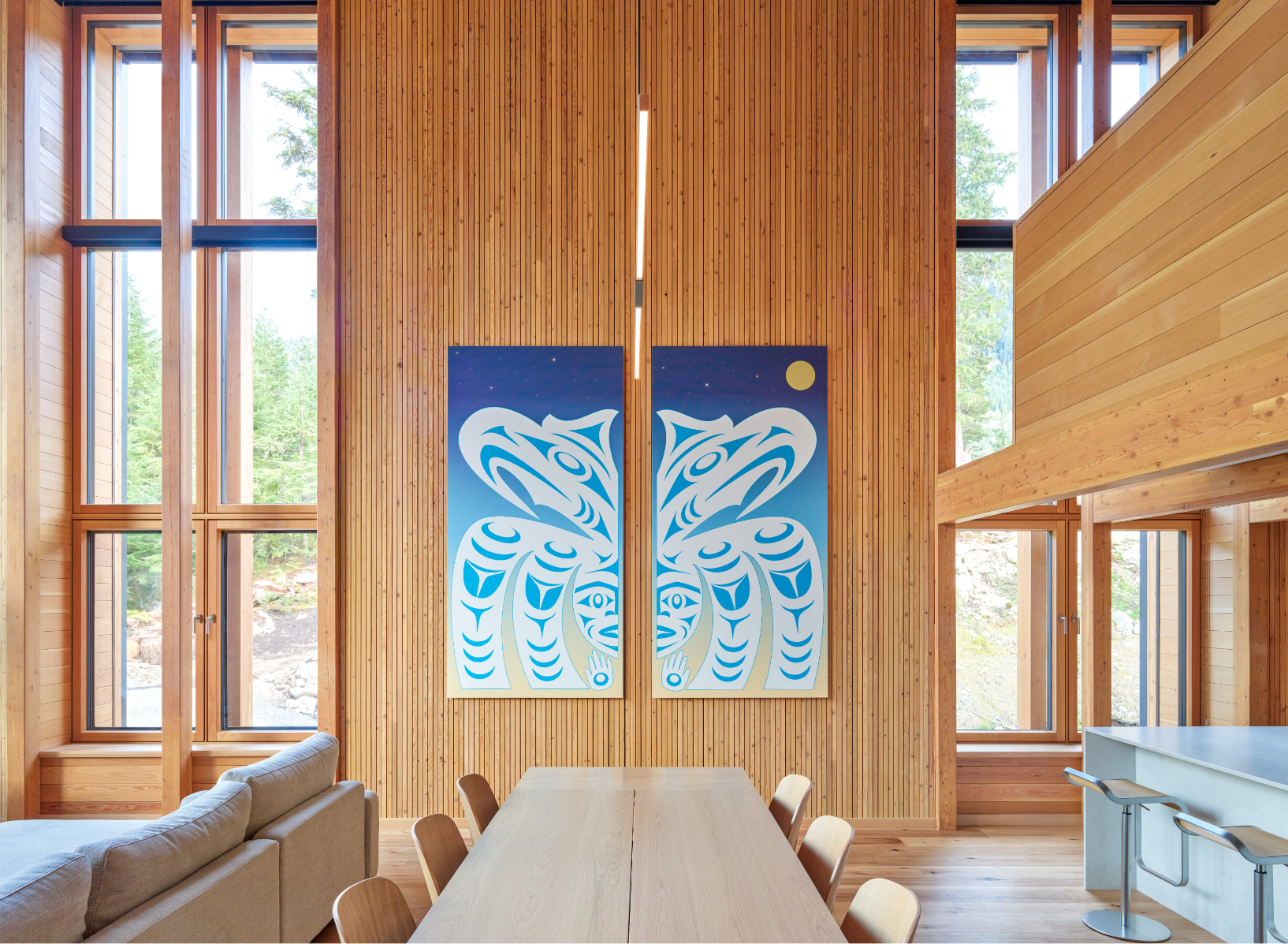
The SLB also used research and partnerships to explore opportunities in new markets this year, with FEA providing research on wood use in outdoor markets, an analysis of future machine stress rated lumber demand, and the potential impact of offsite construction practices on lumber demand. The studies assess trends driving lumber demand and identify growth opportunities, providing insights that guide the SLB’s investments in these market segments.
The SLB commissioned another market assessment to examine the potential for softwood lumber’s use in commercial interiors, finding a market opportunity of 1.22 BBF. Think Wood will expand its communications to reinforce softwood lumber’s strengths and benefits for commercial interiors and capture incremental market share.
Looking at broader consumer sentiment about wood products and the forest products industry, a survey commissioned by the SLB and conducted by Bully Pulpit Interactive found that the wood products industry is highly regarded, and as a material, wood is largely viewed as warm and welcoming, with older people and homeowners driving this trend. There is ample opportunity to shape people’s views of wood, and the report will offer valuable insights as the SLB and partners develop communications strategies and messaging.
WoodWorks helped Jordan Janicki, Principal Structural Engineer with DCG/Watershed, realize a vision for a replicable 185,000-square-foot Type V-B mass timber warehouse and two-story office structure that features glulam and CLT, representing an average of 14.3 BF/SF in the project. Janicki and WoodWorks co-hosted a tour of the Janicki Industries warehouse for about 60 architecture, engineering, and construction professionals as part of WoodWorks’ educational programming, and WoodWorks published a case study on the project.
WoodWorks also hosted a webinar on mass timber warehouses featuring two builders with project experience, while Think Wood published a blog post examining the business case for developers turning to mass timber. By supporting developers’ need for examples and lessons learned from real-world projects, the SLB and its programs can help grow wood’s market share in a sector with sky-high potential.
To maximize market opportunities for softwood lumber, the SLB and its programs must continue to help grow market share, both in segments where it has made significant in-roads—such as multifamily, commercial, and educational buildings—and in building types that have not typically used wood
The warehouse and distribution facility sector is a prime example of this growth opportunity. According to Forest Economic Advisors’ 2024 U.S. Outlook for the SLB, this segment has experienced tremendous growth over the past six years, now accounting for 28% of the built area, second only to multifamily projects. Although the use of structural wood systems in warehouse projects has been limited, the SLB and its programs are supporting and promoting efforts by sustainability-focused developers to build with wood.

1 of 4


Before 2021, Fort Myers, Florida–based architecture firm Studio+ specialized in building steel-and-concrete systems. Since then, the firm has used WoodWorks’ technical resources to design three light-frame assisted living developments in the Southeast. High Point was the second of the developments and required WoodWorks’ assistance with detailing. The program team met with the firm to address concerns from local building code officials, assist with firewall design, and grant access to a library of architectural details. The result was the completion of a 285,000-square-foot light-frame contemporary residence consisting of independent living, assisted living, and memory care facilities and featuring outdoor living areas for seniors.

These WoodWorks-assisted projects showcase growth sectors for wood construction with light-frame, mass timber, and hybrid systems in both established and growing markets.

BOARD FEET


17.1%
$3,146,000
Communications
24.9%
$4,574,090
Code
30.2%
$5,550,000
Conversion
3.6%
$654,000
Industry Relations
3.4%
$618,000
Applied Research
2.0%
$368,000
Public-Private Partnerships
7.4%
$1,368,000
Education
0.8%
$150,000
Government Fees
7.8%
$1,438,500
Administration
$500,000
Working Forest Campaign
2.7%



Jim Neiman
President & CEO | Neiman Enterprises Inc. Finance Chair
The SLB funds and supports WoodWorks, the AWC, Education, and Think Wood to grow market share for softwood lumber, and it’s working: Every dollar invested in the SLB generated 86 board feet of incremental demand. The SLB team has done an excellent job investing in its programs, as well as in wood industry partnerships and carbon and sustainability efforts. With momentum on our side, we need to continue to build on this success.
Lee
Education
Think Wood
Marketing and
Communications
Operations
Flom







*2023 Executive Committee Members
President, Wood Products

Vice President

President & CEO

President & CEO
Ferris*

President & CEO
Biewer

President & CEO
Neiman*

President
(Chair Emeritus)

President & CEO
Cremers
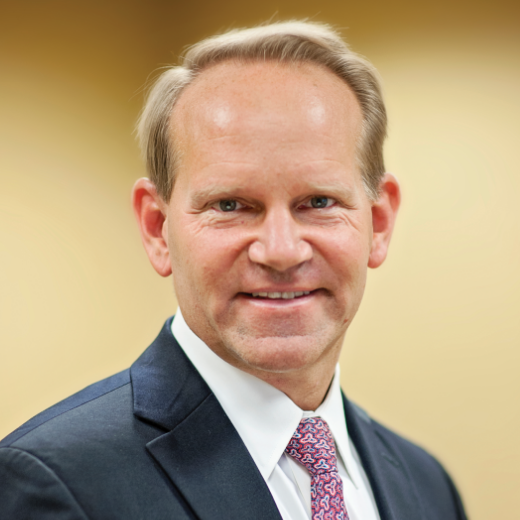
(Chair Emeritus)

President & CEO

Senior Vice President
of Wood Products
O’Rear

President
(Chair)
Luoma*

Owner
Hankins*
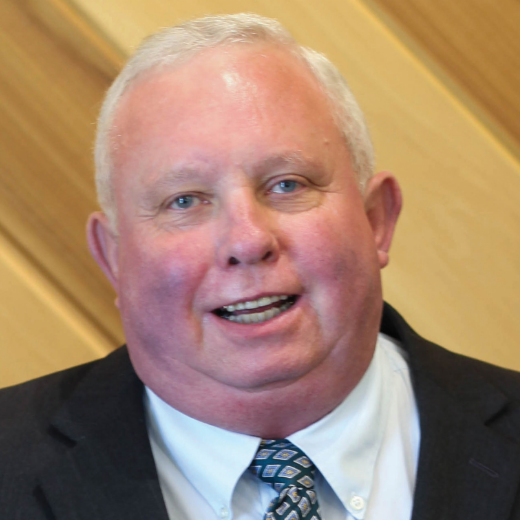
Owner
(Immediate Past Chair)
Dauzat*

Executive: Jack Jordan, Jordan Lumber & Supply, Chair Emeritus, Ex-Officio; Don Kayne, Canfor, Program Chair Emeritus, Ex-Officio
Finance: Furman Brodie, Charles Ingram Lumber Co.; Fritz Mason, Georgia-Pacific; Ian Fillinger, Interfor; Susan Coulombe, J.D. Irving, Ltd.; Alden Robbins, Robbins Lumber
IR&G: Jim Langdale, Langdale Forest Products; Todd Payne, Sierra Pacific Industries
If you'd like a printed version of the Annual Report mailed to you,
please email info@softwoodlumberboard.org. *For Industry Members Only
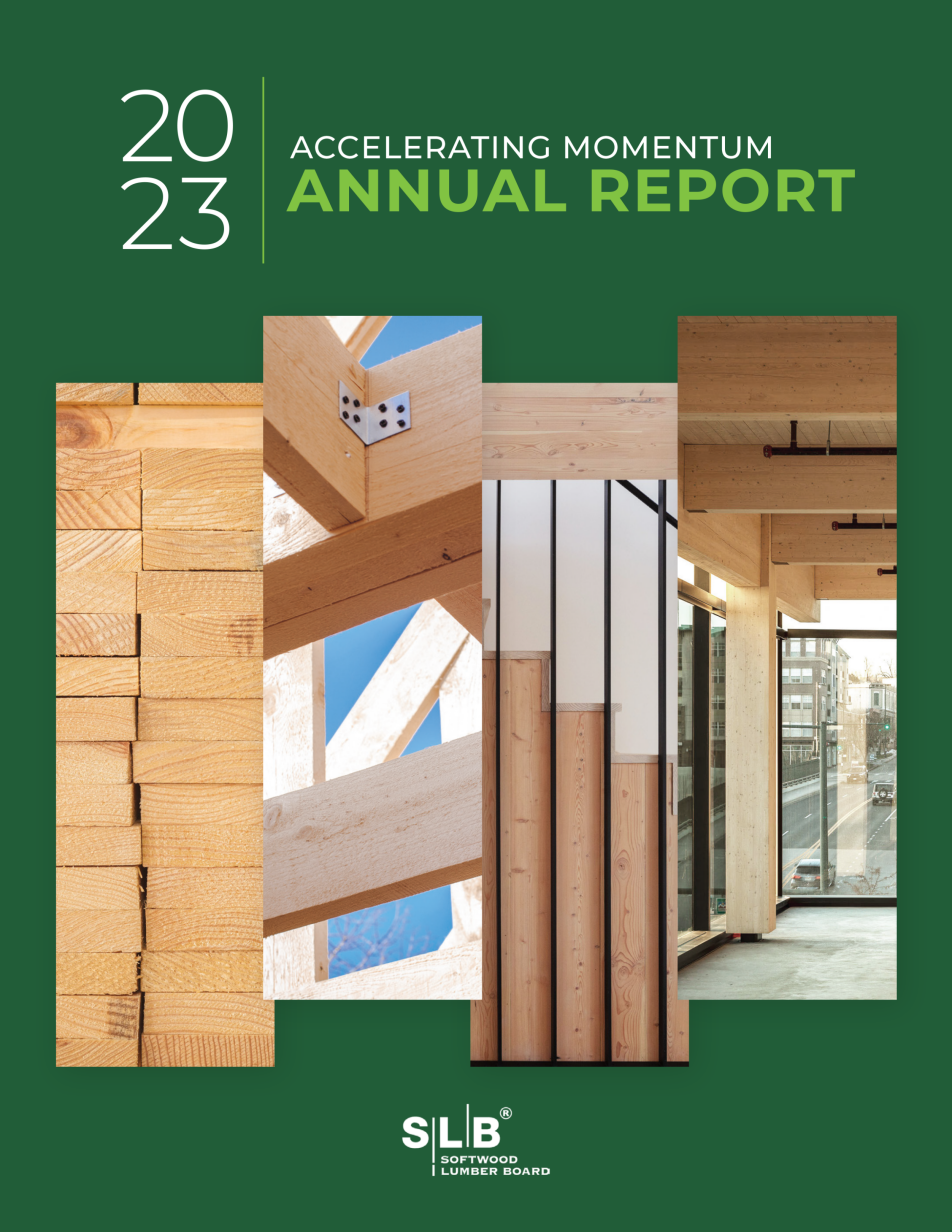




SCROLL TO TOP



Jerome Pelletier
Vice President | J.D. Irving
Program Chair


I'm very proud of what the team has accomplished in terms of market growth, generating 1.9 billion board feet of incremental demand in 2023.
I’m particularly excited about the partnership developing between the lumber industry and the steel industry through joint projects with Constructsteel and CTBUH. Instead of fighting with the steel industry, we're building a bridge and working hard at developing areas where we can complement each other and grow market share.

Co-Nurtured Leads That Led To
Qualified Leads (SQLs)
TO 1,490 SINCE 2019.

CONTINUED TO BE LIGHT-FRAME CONSTRUCTION IN 2023.
Incremental Lumber in 2023.
MASS TIMBER BUILDINGS.



States Represents

Over the Lifetime of the SLB from 2012–2023.
FROM SLB INVESTMENTS.

GROWTH
ANNUALLY.
THIRD
billion


RESULTING FROM SLB
INVESTMENTS SINCE 2012.

cars of coal.

BY FACILITATING WOOD USE, PRODUCED A CARBON BENEFIT OF
5 MILLION METRIC TONS OF CO2.
2023 HIGHLIGHTS
For many developers and design professionals, lumber’s sustainability story, biophilic benefits, and aesthetic appeal are key reasons to build their projects with wood. But economics are often paramount, and lumber-based building systems offer an attractive solution there as well. The SLB and our programs and initiatives are highlighting these benefits to grow market share even in declining markets to ensure that we not only reap the benefits in the short term but also transform how buildings are built in the future.
The SLB is capitalizing on the growing interest in wood construction and lumber solutions specifically by expanding its partnerships. The most recent example of this is our expanded network of university faculty integrating a focus on wood systems into their academic programs. We are fortunate and grateful to have received funding assistance from the U.S. Endowment for Forestry and Communities toward this effort.
In 2023, we continued our successful public-private partnerships. The most successful of these collaborations is with the USDA Forest Service on impactful initiatives such as the Mass Timber Competition, new mass timber accelerators, and the Think Wood communications program and Mobile Tour—each of which is not only supporting innovative projects built with wood, but also creating advocates that will go on to promote the use of wood in groundbreaking buildings to come. We also partnered with British Columbia’s Forestry Innovation Investment to research public perceptions of wood products. This project helped programs like Think Wood shape messaging.
For the first time, the SLB ventured beyond our industry to partner on research and market development initiatives with World Steel Association’s ConstructSteel program, the Council on Tall Buildings and Urban Habitat (CTBUH), and the Charles Pankow Foundation. These efforts focused on capturing market share for steel-wood hybrid systems where wood-only systems are not feasible. Typically, lumber-based systems are used for the floor plates while steel is used for the structural system. Steel and wood together is a true win-win.
As I reflect on another impactful year by the SLB, I’m appreciative of the leadership of our Board, the insights from our industry funders, and the dedication of our SLB team and the programs that make it possible for us to achieve our common goal of a stronger, more resilient softwood lumber industry. Thank you.
Please continue to share your perspective, insights, and guidance as we position the softwood lumber industry for further growth
and prosperity.
Sincerely,
Cees de Jager | President & CEO

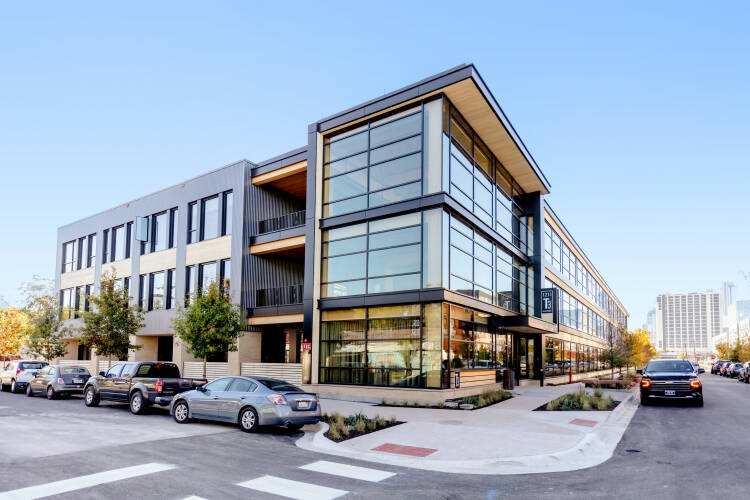
TO GROW SOFTWOOD LUMBER MARKET SHARE
The SLB is a careful steward of our industry’s funding through the checkoff program. I’m proud to share that this year, the SLB’s return on investment was $42.79 for each dollar spent, as independently calculated and verified by USDA economists. Since inception, the SLB has generated $45.26 of revenue for every $1 invested by the lumber industry, making the SLB one of the most successful checkoff programs operating today.
The success of the SLB is made possible by the strong industry leadership provided by its Board. As such, I would like to thank outgoing Directors Eric Cremers of PotlatchDeltic, Hugues Simon of Resolute Forest Products, and Caroline Dauzat of Rex Lumber for their service and contributions to the Board. Caroline deserves special recognition: She led the Board during the challenging times of the Covid era, restructured and formalized the leadership compensation process, and laid the groundwork for more and diverse voices to be added to the SLB’s governance structure. We are fortunate that she will continue to serve on the Executive Committee.
Thank you once again for the support you’ve provided, not only to me, but to the staff of the SLB’s programs, the employees in your workforce, and the people in your community by investing in the industry’s future. I look forward to working with you in the year ahead to continue building on this year’s accomplishments.
Sincerely,
Brian Luoma | SLB Board Chair


Dear Investors,
Through its direct investments and the efforts of our funded programs—the American Wood Council (AWC), Think Wood, and WoodWorks—the SLB delivered another strong year for demand growth and impact for the softwood lumber industry, generating 1.9 billion board feet in incremental demand in 2023. Challenging markets, particularly in the non-residential segment, have required developers to differentiate their projects, and converting them to wood has enabled them to do so, allowing them to benefit from lumber’s economic and environmental value proposition. The impact of the increase in demand for wood and diversification away from other materials resulted in a total carbon benefit—stored and avoided—of 5 million metric tons of CO2 in 2023.
Dear Fellow Investors and Colleagues,
It is my privilege to share with you the Softwood Lumber Board’s 2023 Annual Report. It was a year of tremendous progress for the SLB and its funded programs and initiatives. The SLB continues to prove its impact for industry investors by protecting existing markets and generating more softwood lumber demand by expanding new and emerging markets.
Lumber and lumber-based building systems are a key to making non-residential and multifamily buildings more affordable, valuable, and sustainable, and there’s a growing consensus among the building design industry, developers, and their clients about the positive economic and environmental attributes of wood products. Based on the discussions I have had, our industry is recognizing the impact and value of the SLB’s investments over the last 12 years.
This positive momentum serves as a tailwind, amplifying the influence of the SLB’s work. When project teams begin their work already knowing that wood can differentiate their buildings from competitive offerings, our efforts to remove obstacles to using wood have more immediate impact. The results of this work over time are remarkable: The SLB’s investments have generated 13.7 billion board feet of incremental lumber demand since inception.









Leads (SQLs)




CONSTRUCTION
86% of Goal






J.D. Hankins
Owner | Hankins Inc.
Industry Relations and Governance Chair


The SLB is such an important part of our industry—I wish we could have created it 20 years earlier. The SLB has led to more cohesiveness in our industry than I ever thought could exist. I’ve been impressed with the diversity of perspectives coming from different regions and companies of different sizes, bringing up ideas that can change our industry for the better. It’s critical that we continue to get participation from investors to help guide the direction of the organization, so we can keep making headway on finding more opportunities to use lumber.



WOOD INSTITUTE
115% of Goal
Accounts





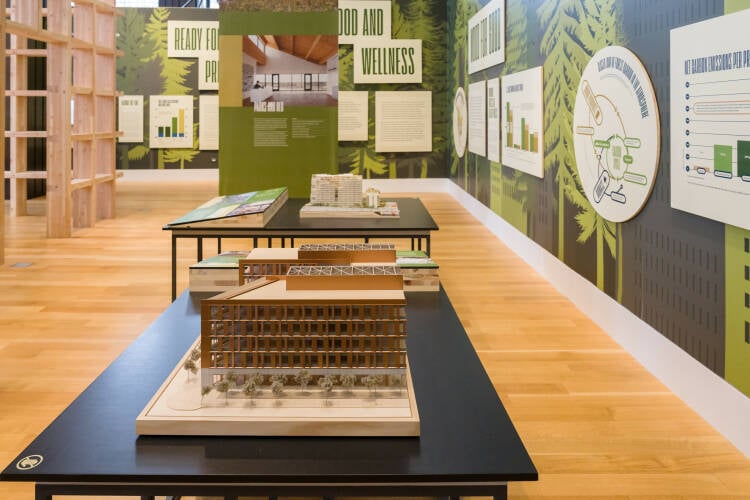
Working with strategic partners leverages the SLB’s investments in efforts to grow demand for softwood lumber, helping both to grow awareness with wider audiences and to seed innovation.
In addition, several projects funded in previous years by Wood Innovations Grants and supported by matching funds from the SLB are making significant progress—opening up new market opportunities for the softwood lumber industry. These include:
Design and engineering analysis for two mass timber high-rise residential developments from The Neutral Project
An all-wood mixed-use building in Portland, Oregon, demonstrating the potential for exposed timber components
Blast testing research in reinforced CLT from engineering consultants Karagozian & Case
A CLT design tool developed by structural engineering firm Equilibrium
The SLB continued its work in 2023 with the CTBUH and Constructsteel, building on an audit that found market potential for wood-steel hybrid towers, with only 8% of the 84 tall mass timber towers built to date using mass timber and steel. After launching the Steel-Timber Hybrid Buildings Conference in 2022, CTBUH completed a draft in 2023 of a technical guide on the potential of steel-timber hybrid buildings featuring detailed case studies and data. The resource is set to publish in 2024.
Another SLB-funded interactive exhibit about wood products and building design in the Northeast, designed for the Fairbanks Museum in St. Johnsbury, Vermont, is now being repurposed at Maine’s Portland Museum of Art, raising wood products’ profile with the design community and general public.
The SLB is also helping fund a growing number of market-expanding innovations in partnership with the USDA Forest Service. New mass timber accelerator programs in Atlanta and New York City use matching funds from the Forest Service’s Wood Innovations Grants and other programs, leveraging the impact of the SLB’s $50,000 investment for each against the $500,000 overall project. The accelerators will fund and support selected projects with technical assistance, removing barriers and streamlining code compliance to help build momentum in the cities.
In 2023, the Chicago Architecture Center launched the SLB-sponsored exhibit REFRAMED: The Future of Cities in Wood, which showcases the sustainable, aesthetic, and biophilic benefits of building more cities with mass timber and tall wood construction. Reaching an influential audience of design industry thought leaders, and supplemented by a series of wood design–focused lectures, the exhibit established wood as a progressive, innovative material of choice that can help address some of the biggest challenges of our times. The success of REFRAMED, which concluded in January 2024, prompted the Skyscraper Museum in New York to launch its own exhibition—called TALL TIMBER: The Future of Cities in Wood—using elements from the Chicago program. TALL TIMBER is expected to run from February to April 2024.


John Crockett
Deputy Chief of State and Private Forestry
USDA Forest Service


One way to improve the health and resilience of forests is by sustainably harvesting trees to manufacture wood products like mass timber. As wildfires become more prevalent across the United States, a stronger supply chain for lumber and mass timber improves forest health and supports the construction of low carbon buildings—both effective ways to mitigate the impacts of climate change.
AWARD RECIPIENTS
This year’s Mass Timber Competition: Building to Net-Zero Carbon creates new opportunities for broader adoption of mass timber.
EXPANDS MARKET INNOVATIONS
1 of 5


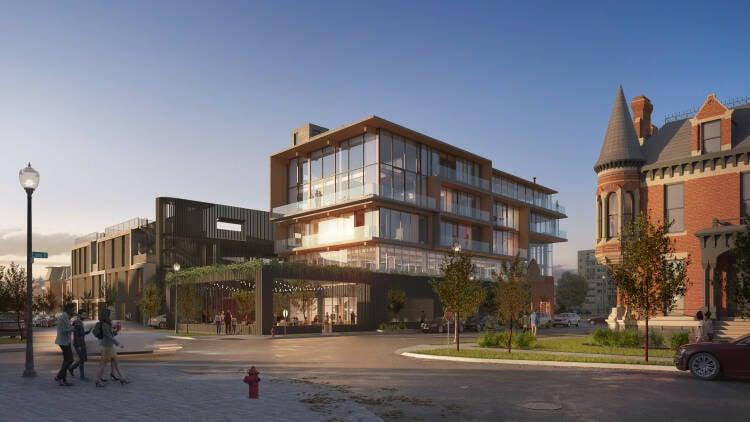
CODA Detroit
A 95,000-square-foot, five-story mixed-use mass timber residential project incorporating elements of historic preservation and new methods to address acoustical challenges. Its team comprises OOMBRA Architects, Brush Park Properties, IN Development Partners, JDH Engineering, Britt Peters and Associates, and AM Higley.
The award recipients were announced in Chicago in October at the REFRAMED exhibit at the Chicago Architecture Center. Over the two iterations, the softwood lumber industry invested $2 million for the prize funding, leveraging an additional $2 million from the USDA Forest Service. To advance the market, award recipients are sharing lessons learned during project phases—including cost analyses, life cycle assessments, and other research—with the broader design and construction community to promote faster adoption of mass timber as a structural material in similar projects across the country.
Winning projects from both the 2022 and 2023 competitions are making progress and already beginning to generate insights that can be used to solve long-term challenges for mass timber adoption. Evergreen Charter School, an 85,000-square-foot, five-story hybrid CLT education facility with biophilic design elements, broke ground in Q2 and is planned for completion in 2024. “When you look at the rendering for our classroom, and you see wood in the space, it’s a completely different environment. It looks so much more positive than a typical classroom,” architect Martin Hopp said in a WoodWorks case study. “Ultimately, if we can design better-quality environments for the same price, that equals better performance, lower rates of absenteeism, etc. That’s the key metric we’re designing for.”
The project team for 2022 winner Return to Form, a 12-story multifamily and retail project in Denver with affordable housing, completed a Whole Building Life Cycle Assessment, demonstrating the full carbon footprint benefits of mass timber construction with a real-world example. It is projected to be the tallest mass timber structure in Denver when completed, targeted in 2025.
The second consecutive competition, funded jointly by the Softwood Lumber Board and USDA Forest Service, showcases uses of mass timber, expands the building types that can be built from wood, and strengthens the supply chain for lumber from working forests. The competition supports multiple segments of the design and construction industry and assists project teams to solve challenges and overcome hurdles that often confront newer products and systems.

The SLB also used research and partnerships to explore opportunities in new markets this year, with FEA providing research on wood use in outdoor markets, an analysis of future machine stress rated lumber demand, and the potential impact of offsite construction practices on lumber demand. The studies assess trends driving lumber demand and identify growth opportunities, providing insights that guide the SLB’s investments in these market segments.
The SLB commissioned another market assessment to examine the potential for softwood lumber’s use in commercial interiors, finding a market opportunity of 1.22 BBF. Think Wood will expand its communications to reinforce softwood lumber’s strengths and benefits for commercial interiors and capture incremental market share.
Looking at broader consumer sentiment about wood products and the forest products industry, a survey commissioned by the SLB and conducted by Bully Pulpit Interactive found that the wood products industry is highly regarded, and as a material, wood is largely viewed as warm and welcoming, with older people and homeowners driving this trend. There is ample opportunity to shape people’s views of wood, and the report will offer valuable insights as the SLB and partners develop communications strategies and messaging.
for GROWTH


WoodWorks helped Jordan Janicki, Principal Structural Engineer with DCG/Watershed, realize a vision for a replicable 185,000-square-foot Type V-B mass timber warehouse and two-story office structure that features glulam and CLT, representing an average of 14.3 BF/SF in the project. Janicki and WoodWorks co-hosted a tour of the Janicki Industries warehouse for about 60 architecture, engineering, and construction professionals as part of WoodWorks’ educational programming, and WoodWorks published a case study on the project.
WoodWorks also hosted a webinar on mass timber warehouses featuring two builders with project experience, while Think Wood published a blog post examining the business case for developers turning to mass timber. By supporting developers’ need for examples and lessons learned from real-world projects, the SLB and its programs can help grow wood’s market share in a sector with sky-high potential.
To maximize market opportunities for softwood lumber, the SLB and its programs must continue to help grow market share, both in segments where it has made significant in-roads—such as multifamily, commercial, and educational buildings—and in building types that have not typically used wood
The warehouse and distribution facility sector is a prime example of this growth opportunity. According to Forest Economic Advisors’ 2024 U.S. Outlook for the SLB, this segment has experienced tremendous growth over the past six years, now accounting for 28% of the built area, second only to multifamily projects. Although the use of structural wood systems in warehouse projects has been limited, the SLB and its programs are supporting and promoting efforts by sustainability-focused developers to build with wood.
1 of 4


Before 2021, Fort Myers, Florida–based architecture firm Studio+ specialized in building steel-and-concrete systems. Since then, the firm has used WoodWorks’ technical resources to design three light-frame assisted living developments in the Southeast. High Point was the second of the developments and required WoodWorks’ assistance with detailing. The program team met with the firm to address concerns from local building code officials, assist with firewall design, and grant access to a library of architectural details. The result was the completion of a 285,000-square-foot light-frame contemporary residence consisting of independent living, assisted living, and memory care facilities and featuring outdoor living areas for seniors.
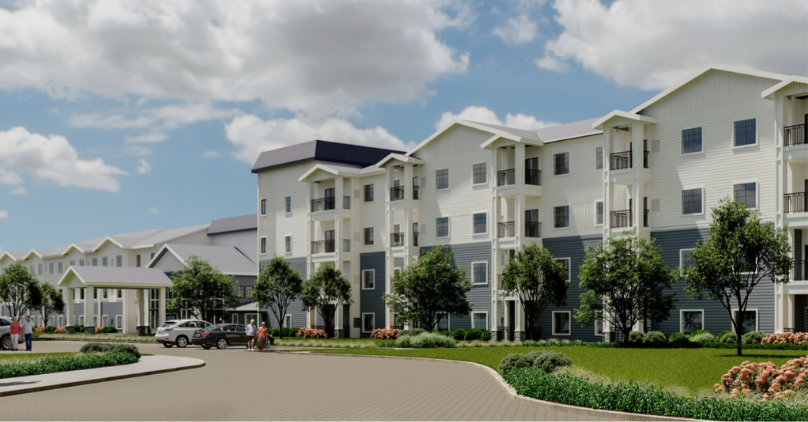
These WoodWorks-assisted projects showcase growth sectors for wood construction with light-frame, mass timber, and hybrid systems in both established and growing markets.
of Opportunity
Project Highlights


24.9%
$4,574,090
Code

BOARD FEET



Jim Neiman
President & CEO | Neiman Enterprises Inc.
Finance Chair
The SLB funds and supports WoodWorks, the AWC, Education, and Think Wood to grow market share for softwood lumber, and it’s working: Every dollar invested in the SLB generated 86 board feet of incremental demand. The SLB team has done an excellent job investing in its programs, as well as in wood industry partnerships and carbon and sustainability efforts. With momentum on our side, we need to continue to build on this success.
FINANCIALS
Executive: Jack Jordan, Jordan Lumber & Supply, Chair Emeritus, Ex-Officio; Don Kayne, Canfor, Program Chair Emeritus, Ex-Officio
Finance: Furman Brodie, Charles Ingram Lumber Co.; Fritz Mason, Georgia-Pacific; Ian Fillinger, Interfor; Susan Coulombe, J.D. Irving, Ltd.; Alden Robbins, Robbins Lumber
IR&G: Jim Langdale, Langdale Forest Products; Todd Payne, Sierra Pacific Industries
President & CEO

President & CEO


Education

Lee

Think Wood
Gerfen

Marketing and Communications
Hyoun

Operations

Flom

Jager
President, Wood Products

Vice President

President & CEO

President & CEO

President & CEO

President
(Chair Emeritus)
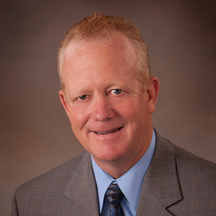
President & CEO

Chair
(Chair Emeritus)
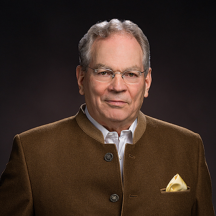
Senior Vice President
of Wood Products

President
(Chair)

Owner
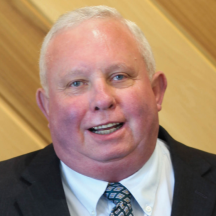
Owner
(Immediate Past Chair)

COMMITTEE MEMBERS
*2023 Executive Committee members
BOARD OF DIRECTORS
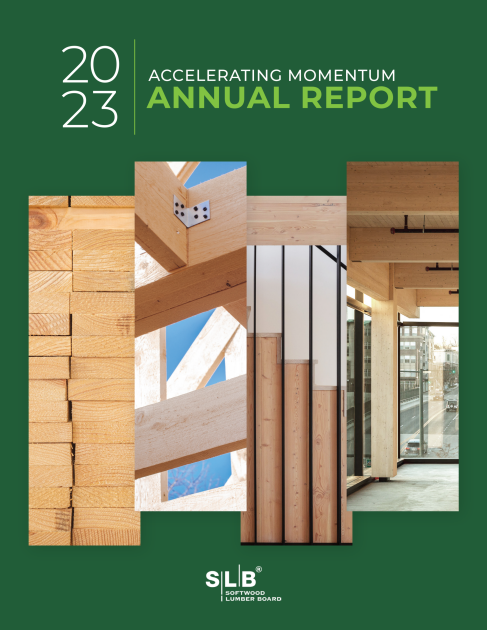
SCROLL TO TOP


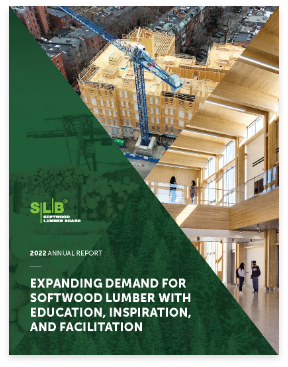


If you'd like a printed version of the
Annual Report mailed to you, please email info@softwoodlumberboard.org.
*For Industry Members Only

of the Impact of the SLB








